The co-founder of Ars Electronica, Herbert W. Franke passed away at the age of 95
"Art is always about mathematics. Every image can be described mathematically. There is nothing more than a formula behind it.”
One of the pioneers of generative art has died: Herbert W. Franke, artist, writer, physicist, and philosopher, whose work influenced generations of new media artists, was 95 years old. Herbert's death on the 16th of July was announced by his wife, Susanne.
Herbert Werner Franke Image © the artist
Herbert Werner Franke was born in Austria on May 14, 1927. He studied Physics and Philosophy in Vienna. In 1951 he received his Doctorate in Theoretical Physics by writing his dissertation about electron optics. Today Franke is known as the most important post-war German-language writer in the genre of science fiction. Franke is also recognized worldwide as a pioneer of algorithmic art. His intellectual work is based equally on the rationality of the researcher and the creativity of the artist. He is particularly interested in creating aesthetically interesting structures with the help of computer programs. In addition to creating works of art, Franke has also been intensively involved in questions of rational aesthetics. In his "Rational Theory of Art," published as early as the mid-1960s, he described the perception of art as a construct that can be grasped with the help of information theory.
Kate Vass Galerie is honored to have worked with him and exhibited his works. He was part of our AUTOMAT UND MENSCH exhibition in 2019, where we put important work by generative artists spanning the last 70 years into context by showing it in a single location. By displaying important works like the 1956/’57 oscillograms by Herbert W. Franke, we showed the full history and spectrum of generative art.
The MATH GOES ART was a solo exhibition in 2021 at Kate Vass Galerie, that was dedicated to Herbert's latest period, the so-called Math Art. Herbert W. Franke has been interested in mathematical aesthetics for the last decades and had experimented with algorithms and computer programs to visualize math in art.
"It opened my eyes to things I had never seen before, such as beautiful crystalline landscapes. It soon became clear that if the electric fields were deliberately calculated differently, quite adventurous figures would emerge. That gave me the idea of using other tools of technical laboratories, such as oscillographs and later computers, to create images for artistic purposes." - he commented.
Drakula Series, 1970 - 1971
The Drakula series, from the seventies, was displayed at the MATH GOES ART show. The series was an ideal instrument as a study object of experimental aesthetics since they could be quantified well in terms of information theory. The Heighway dragon curve was first discovered by NASA physicists John Heighway and Bruce Banks in 1966 and named by his colleague William Harter. It can be constructed from a base line segment by repeatedly replacing each segment by two segments with a right angle and with a rotation of 45° alternatively to the right and to the left. Franke's 'dragon curves' are formed by sequences of left and right turns according to certain rules. The program allows to string together and superimpose dragon curves of different orders - or even sections of such curves.
The Lissajous Series
We are also proud that Herbert minted his first NFTs with the Gallery. The Lissajous series consists of 11 works in two color combinations: Lissajous blue/orange and Lissajous pink/turquoise. Only 4 were minted on opensea.io and are now only available from the secondary market. The Lissajous figures can be defined as any of an infinite variety of curves formed by combining two mutually perpendicular simple harmonic motions, commonly exhibited by the oscilloscope, and used in studying frequency, amplitude, and phase relations of harmonic variables. They are named after the French physicist Jules Antoine Lissajous (1822-1880). Lissajous curves are sometimes also known as Bowditch curves after Nathaniel Bowditch, who studied them in 1815 but were studied in more detail by Jules-Antoine in 1857.
Two artworks of Herbert W. Franke are currently available at Phillips Auction. More information can be found here.
The artists, Robbie Barrat, Mario Klingemann, Herbert W. Franke and co-curators Jason Bailey and Georg Bak with Kate Vass, at Kate Vass Galerie 2019 Automat und Mensch
Ex-Machina: A History of Generative Art by Phillips
Ex-Machina: A History of Generative Art © Phillips
Phillips is pleased to present Ex-Machina: A History of Generative Art, an exhibition and online auction. Curated by Georg Bak, Ex-Machina illustrates the history of Generative art, starting in the 1950s with the pioneers of computer art through to present day generative NFT artists. Featuring unseen works by pioneers Vera Molnar, Herbert W. Franke and Gottfried Jäger, Ex-Machina also brings to market for the first time works by generative NFT artists Snowfro and Dmitri Cherniak. The full selection of works will be on view at 30 Berkeley Square, London from 11 July - 5 August, with the online auction taking place 13 - 20 July on phillips.com.
An Introduction to Generative Art by Georg Bak
© SNOWCASH
The new age of information technology began with the invention of the Turing machine and the first mainframe computers by Konrad Zuse during and after the Second World War. As early as the late 1940s, Norbert Wiener and Claude Shannon formulated the first theoretical approaches to cybernetics, which form important foundations for information aesthetics.
The binary system, electronic communication, algorithms and early programming languages also inspired artists. Herbert W. Franke is among the pioneers of computer art, who created works of art – so‐called oscillograms – with analogue computing systems and cathode ray oscillographs as early as the mid‐1950s. On the control panel, he turned, calculated and manipulated, and sine curves and sawtooth curves, which were photographed with the camera, were superimposed on the screen.
Even then there was a group of artists who were open to the new technology. Large corporations, namely Olivetti, Siemens and Bell Laboratories, provided them with electronic engineering equipment and the know‐how of their specialists.
Looking back, 1968 is considered the high point of the computer art movement. At the Institute of Contemporary Art (ICA), London, Jasia Reichardt curated the groundbreaking group exhibition Cybernetic Serendipity, featuring computer‐animated films, plotter graphics, generative music, robots and painting machines.
Among the participating artists were Frieder Nake, Georg Nees, Desmond Paul Henry and Vera Molnar. As a result, the Computer Art Society and the computer art magazine PAGE, edited by Gustav Metzger, were founded in London. Today, the Victoria & Albert Museum in London preserves a large part of the heritage of this period of promoterism.
© SNOWCASH
One day after London, Abraham A. Moles opened the Computers and Visual Research symposium as a parallel event as part of the Nove Tendencije (New Tendencies) exhibition series in Zagreb, as well as a small accompanying exhibition with computer graphic by Charles Csuri, Vladimir Bonacic and other artists. As a result, a major new art magazine, bit international (1968‐1972), was launched in Zagreb.
At the same time, the German photographer Gottfried Jäger introduced the concept of generative photography with the exhibition of the same name in the Städtische Kunsthaus in Bielefeld, where his pinhole structures can be seen together with works by Kilian Breier (photograms), Pierre Cordier (chemigrams) and Hein Gravenhorst (photomechanical transformations). Gottfried Jäger defined the production principle common to the artists and inherent in generative photography as follows: “Creation of aesthetic structures based on defined programs, realized through photochemical, photooptical or phototechnical operations, with the aim of achieving an optimal and functional relationship of all the elements involved in the construction of the aesthetic structure.” Characteristic of generative photography is the experimental and serial process, the mathematical structure (program) and often the devices designed by the artists themselves.
Twenty years later, when the personal computer conquered office desks in the 1980s, the media theorist Vilém Flusser stated with foresight: “Changing the world is up to machines: they do it much better than humans. It is up to humans (for the time being) to program machines to change the world. So it is not people's business to work, but to give work a meaning (to prescribe it). Rules are codified commands.”
© SNOWCASH
At the end of the 1970s it was again Herbert W. Franke who took the initiative to organize a large exhibition “Ars Ex Machina” at Künstlerhaus Wien with the aim of creating an annual show highlighting the current artistic expressions in relation to the most cutting-edge technology. Unfortunately, the project could not be realized at the given time due to a lack of financial support. As a result of these ambitious efforts, “Ars Electronica” was founded in 1979, which has taken place annually in Linz (Austria) ever since and is still one of the most important exhibitions of media art today.
With the explosive rise of blockchain technology and the conquest of the art market by NFTs and digital art, PHILLIPS is undertaking, for the first time in auction history the endevour to highlight the most important and overlooked art movement of generative art with the major artists of now and then.
Dates:
London Preview 11 July – 5 August (30 Berkeley Square)
Online Auction 13-20 July 2022
More information about the auction can be found on the official website.
‘My first NFT, and why it was not a life-changing experience’ by Cornelia Sollfrank
NfTNeTArT, exhibition view at panke.gallery, anonymous_warhol-flowers, left Sabotage by Kim Asendorf, Copyright © Makery
“From Commons to NFTs” is an (expanded) writing series initiated by Shu Lea Cheang, Felix Stalder & Ewen Chardronnet. Cautioned by the speculative bubble (burst) of NFTs, the series brings back the notion of commons from around the turn of the millennium to reflect upon and intervene in the transformation of the collective imagination and its divergent futures. Every last day of the month Makery publishes a new contribution of these “chain essays”. Fifth text by Cornelia Sollfrank.
In a nicer, happier world, NFTs would be fun little things you could make and collect and trade, and it’d be great. It’s a pity this is crypto.
In December 2021, I was approached by Sakrowski, the curator of panke.gallery, an off-space in Berlin focusing on Internet Art. He was planning a NFT show for February 2022. Before explaining any further details, the curator asked me if I would be up for offering NFTs of my work. A good question! I was skeptical of the hype while at the same time interested in forming an opinion based on practical, first-hand experience. Artists have tried to rethink the blockchain for a while now. How to approach a technology that has been poised for a few years now to overtake the WWW “as the next big network technology for speculation and disruption,” and use it for something meaningful, i.e. for something that is not purely driven by financial profit-logic? I agreed to participate in the show as a sort of experiment. As an artist I have the opportunity to get to know something by exploring its (im-)possibilities in practice, to find entry points and loose ends and work my way forward.
Edition //OG flowers //, #1-3, #6-8, anonymous-warhol_flowers@May12, still available for purchase as NFT Copyright © Makery
NFTs are one application of blockchain technology, and I am particularly interested in exploring the hype around NFTs in the art context. A quick reminder: Not all NFTs are art. The abbreviation simply stands for “non-fungible tokens,” i.e. certificates of ownership, mainly for “unique” digital assets, stored on the blockchain. NFTs have existed for a few years now, but as a cultural phenomenon they have received broad media attention following the sales of NFTs for art works for which many millions were paid. Suddenly, all eyes turned to the matter, and I asked myself, what was the reason was for this sudden interest in digital art? Why were millions paid now for digital files? Obviously, the digital certificates of ownership have created not just a hype, but also a new market for digital art, but what are the dynamics behind? Who will be able to participate in the world of Art NFTs, and who will do so successfully? Are its opportunities more democratic than the ones of the traditional art world? And not the least, what is the role of the technology behind? Who invents it? Who controls and in whose interest? Is there just some weird genius behind who has managed to create a fetish that is about nothing but keeping our minds and machines busy?
My way to deal with some of the involved abstractions is the one of play and open exploration, thus hoping to find insight through lived contradictions, through the experience of absurdities and confusion by diving into the field instead of observing it from outside. I develop my thoughts along an exhibition I have participated in as an experiment with NFTs.
Copyright © Makery (published 31 May 2022 by Cornelia Sollfrank)
BIG IN JAPAN! AN EXCLUSIVE INTERVIEW WITH SPUTNIKO!
We are excited to share with you an exclusive interview with one of the most talented digital artists Hiro Ozaki aka Sputniko! The interview will be published on 10th June 2022 featuring majorities of her iconic works, that will become available as NFTs for sale.
Copyright © 2022 Sputniko! and Kate Vass Galerie GmbH | All rights reserved
Kate Vass interviews Hiro Ozaki (aka Sputniko!) about her influences, from MIT Labs to art, film and music, and the cultural experiences that have shaped her life and creative practice.
Her work has been exhibited at the MoMA, Pompidou Metz, V&A, and the Cooper Hewitt, and she was awarded Vogue Japan Woman of the Year in 2013. Sputniko! taught at the MIT Media Lab as an Assistant Professor and was the founder of Design Fiction Group from 2013 to 2017. She is currently an Associate Professor at the Tokyo University of Arts. Sputniko! has also been selected as a TED Fellow and gave her TED Fellow talk in TED 2019. She was also chosen as one of the Young Global Leaders by the World Economic Forum and moderated sessions in Davos 2020. She has had her works included in the permanent collections of museums such as the Victoria and Albert Museum (UK) and the 21st Century Museum of Contemporary Art, Kanazawa (Japan).
This conversation addresses gender inequality issues and explores Hiro’s work retrospectively, including the early artworks like MENSTRUATION MACHINE, 2010. The first installation with a video explores the relationship between identity, biology, and choice while inquiring into the meaning of gender-specific rituals.
THE MOONWALK MACHINE, 2013, where Hiro unravels a story about the protagonist Selena, a young science geek, to change the perspective of how Japanese society overlooks young girls’ potential and the social role of women.
In addition, we look at the RED SILK OF FATE, 2016, which was inspired by East Asian mythology in which gods tie an invisible red string between two people that are destined to be together romantically.
And finally, Hiro shares her thoughts on NFTs, Web3 culture, and more projects. We hope you will enjoy reading the interview and discover her excellent work.
All NFT works of Sputniko! can be found on Foundation!
Is art human? Exploring artist collaboration with AI and Algorithms at the Seattle NFT Museum Opening at the Seattle NFT Museum on June 4, 2022
Today, the Seattle NFT Museum announced the fourth exhibition this year, titled “Artist and the Machine,” which will open on June 4th. The paintbrush of digital art has unlimited potential, from 3d renderings to live motion, but perhaps nothing could have prepared us for the impact of algorithms and AI. In this exhibit you will see the wild interactivity between artists and their machines, generating powerful, emotional displays.
“We want to showcase the incredibly rich world of generative art, exploring the endless creative possibilities of the genre and beginning a conversation about the deeply human and aesthetic impact it demonstrates as a medium. Generative art is rapidly gaining recognition as fine art. In this exhibition, we are showing a multitude of outcomes, results, and rich nuances found in the practices of such representative artists,” Joana Kawahara Lino, Curator in Residence at the Seattle NFT Museum
Ticket now on sale: Exhibition Opening Event, June 4th 7:00pm - 10:00pm PT
Seattle NFT Museum is hosting an opening event to launch the new exhibition. Attendees have the opportunity to hear directly from several of the artists on display, learning more about their work and inspiration and meeting them to ask questions. Tickets are on sale now for the exhibition opening on Saturday, April 16th, 7:00pm-10:00pm. Purchase tickets here - https://www.seattlenftmuseum.com/visit
Link to Images and Video
Link to Press Release (Live 8am, Thursday, May 19th)
Featured Artists:
Pindar Van Arman
Pindar Van Arman is an American artist and roboticist who designs painting robots that explore the differences between human and computational creativity. Since his first system in 2005 he has built multiple artificially creative robots earning multiple accolades including a TEDx Talk, making the Shortlist at Barbican’s DevArt Competition, and First Prize in the Robot Art 2018.
Aaron Penne
Seattle based, Aaron Penne is a renowned artist and engineer making generative artwork with code since 2018. His work has been sold at Sotheby’s, shown internationally at galleries and museums, and is collected by hundreds of individuals. He is the Director of Engineering at Art Blocks, helping to build the future of generative art as a medium in the NFT space. In 2021 he was one of the top 50 NFT artists globally.
Phil Bosua
Seattle based and Australian born, Phil Bosua is an artist who believes that the human/AI collaboration is the next great art movement. Since art is fundamental in communicating thoughts and feelings, artificial intelligence represents the next frontier for developing a novel approach to artistic expression. Phil is a part of the AIM collective, an award-winning inventor, and is CEO of Seattle-based Know Labs, Inc.
"AI can turn anyone into a world class painter, as long as you have something to say. Story, philosophy and an awareness of mind are now the only tools you need." Phil Bosua
Botto
Botto is a decentralized artist that generates art based on community feedback. Every week, Botto presents 350 art pieces to the community, who then vote on their favorite artwork. Botto uses these votes to train its algorithm, changing the art it creates over time. Each week, one final artwork is minted as an NFT and put to auction on SuperRare.
Ben Mauro
Ben Mauro is the creator of HUXLEY, a fully-fledged graphic novel series which reveals an immersive creative universe, a decade in the making. Previously, his work made a powerful impact on the gaming world, as senior concept designer and art director for first-person-shooting dynasties Halo and Call of Duty. Ben crafts the characters, weaponry, machinery and gamescapes that these franchises house-hold names for two decades. His visions graced the big screen in Elysium, Chappie, and J.R.R. Tolkien’s The Hobbit. Ben made his first entré into the NFT space through some sci-fi 1/1 pieces on SuperRare and a series of limited edition trading cards entitled, Evolution.
"I'm excited to be a part of the Seattle NFT Museum's 'Artist and the Machine' show to share the world of Huxley and my love of science fiction design with the local NFT community" Ben Mauro
Manoloide
Manoloide, aka Manolo Gamboa Naon, is an Argentinean visual artist and creative programmer whose main interests are in generative visual aesthetics and plastic experimentation with code. In the scope of generativity and process art, his work explores the possibilities of programming as an expressive language. He explores the possible relationships between chaos and order, organic and artificial, randomness and control using images and video. He approaches the digital surface as a plastic space using the code as artistic materiality, based on the experimentation with basic geometric shapes, lines, and colors.
“When I come and create, the most beautiful parts of the work are born from the errors. After a certain point, I believe that the maturity of my style was formed by making small errors because I was discovering as I went along. From these errors, I take an idea, and it stays. I learn how to manipulate these errors. The error is central to the work of generative artists apart from, obviously, the rules. The rules become a text that converts into an image. It is impossible to have what you imagine become what you see. The beginning is errors, errors, errors, errors. They are beautiful errors." - Manolo Gamboa Naon
Eponym
More than 3,000 different artists were involved in the creation of the Eponym collection, but thanks to Eyal Fisher, the generative art expert turned artist, who developed the underlying technology that powers Eponym, who made this unique collection possible.
Eyal started working on AI Art in 2018. He was one of the first people to train a Generative Adversarial Network for the purpose of making art. In 2019 he co-founded the largest gallery for AI generated art. Eyal is an AI engineer by training and made several technological developments in the field. His piece "10 days in the metaverse" was recently sold as part of ASH 2.
Zach Lieberman
Zachary Lieberman is an artist, researcher, and educator with a simple goal: he wants you surprised. In his work, he creates performances and installations that take human gesture as input and amplify them in different ways -- making drawings come to life, imagining what the voice might look like if we could see it, transforming people's silhouettes into music. He's been listed as one of Fast Company's Most Creative People and his projects have won the Golden Nica from Ars Electronica, Interactive Design of the Year from Design Museum London as well as listed in Time Magazine's Best Inventions of the Year. He creates artwork through writing software and is a co-creator of openFrameworks, an open source C++ toolkit for creative coding and helped co-found the School for Poetic Computation, a school examining the lyrical possibilities of code. He is a professor at MIT Media Lab, where he helps run the Future Sketches group.
Licia He
Licia He is a generative artist and a human-computer interaction researcher. Through her research and artworks, she explores ways to record and present information around her. She entered the world of generative art to connect her passion for art and technology. Since her first encounter with a drawing robot, Licia has been focusing on bridging her digital and physical painting practices through plotters.
yungwknd
yungwknd is an artist and smart contract creator from Seattle, WA. His art ranges in style from generative on-chain abstract art to performative blockchain art, to realistic drawings made with code. He’s passionate about telling stories and creating projects that can only be done using the blockchain.
“I am thrilled to participate in this exhibition that highlights the relationship between man and machine. I've always been intrigued by the way in which the physical world can manifest itself in a digital form. The Seattle NFT Museum is a pioneer in bringing the digital to the physical, and it is my great honor to show my art in a hometown museum,” said yungwknd about this upcoming exhibit.
Seattle NFT Museum Permanent Collection:
The launch of this exhibition will feature the first look of Seattle NFT Museum’s early permanent collection. The purpose of the permanent collection is to showcase and support as many artists as possible. The collection will be continually updated and always available to see online, with a select few on rotation at the physical museum. The first NFT on show was created by the Seattle-based team, NFT Worlds (https://www.nftworlds.com/). NFT Worlds was created to be the most powerful, cross-platform (computers/consoles), community-driven & developed metaverse platform of its kind.
Ticketing Information
Seattle NFT Museum is open to the public 1PM - 6PM Monday and Wednesday, 12PM - 5PM Thursday, 12PM - 6:30PM Friday through Sunday. Daily tickets are available for purchase by visiting www.seattlenftmuseum.com. Admission is $15 for all visitors. Ticket proceeds directly contribute to the operating costs of the museum.
About Seattle NFT Museum
As a center for supporting the NFT creator and collector community, the Seattle NFT Museum is a physical space designed to explore the boundaries of digital art. Exhibits include featured artists, notable private collections, and educational displays. The museum hosts ticketed events, private showings, live mintings, and is open to the public for a suggested donation during business hours. Also available for booking private corporate events.
Shopping in the metaverse. Our guide to the major fashion boutiques in Decentraland
Paco Rabanne at metaverse Selfridges
Shopping in the metaverse. Our guide to the major fashion boutiques in Decentraland
Not the first, but the biggest metaverse fashion week to date took place at Decentraland at the end of March. More than 60 fashion brands participated, both digital and traditional - physical. The latter included fashion giants such as Dolce & Gabbana, Philipp Plein, Etro and Tommy Hilfiger.
Since MVFW, the crypto community's attention towards digital fashion has increased manifold, and some brands have opened permanent, rather than pop-up, shops inside Decentraland. A list of those worth a visit:
DressX - https://dressx.com
The first international multi-brand retailer of digital clothing that can be tried on in AR mode or superimposed on your finished photo. Two Ukrainians, Darya Shapovalova and Natalia Modenova, launched this startup in the US in 2020.
The price range: is from $25 to $1,500.
Two DressX brunches open: at Boson Portal and in the new Metajuku fashion district, inspired by the famous Japanese fashion street - Harajuku. The video above is available on the link.
DressX current locations:
Selfridges
One of the boutiques of the English luxury department store chain has been recreated in Decentraland. You can buy NFT dresses (and more) from the Paco Rabanne collection. The collection is on display at the Universe NFT https://universenft.live/. There are also 12 unique Victor Vasarely artworks . Utilities of Vasarely Universe NFTs include VIP visits, Patronage and Plaques within the museum of the buyers name. The collection is here.
The metaverse Selfridges location
Gala Marija Vrbanic and Filip Vajda founded the AR clothing brand in Croatia in 2020. It is now represented on the DressX marketplace, and the virtual boutique is located in the Metajuku area of Decentraland. Frequent attributes are the elongated floor of the pieces, the lacquered surface, and the inflatable elements.
Boson Portal
This space is virtual home for D&G clothes, the DressX and other fashion houses. Exciting events are often held here, and the area itself has a very cool design. If not for shopping, then it is worth a visit for aesthetic pleasure!
Can NFTs change the history of film? New article on Cheyni Blog
Non-fungible tokens (NFTs) proved their versatility in 2021. Entrepreneurs have found compelling uses for them in e-sports, digital art, music and much more. Now the movie industry is joining this new world by launching their own NFTs. Creating NFTs for films has been gaining steam, whether for enhancing the real-time theatre experience, selling merchandise, raising capital for independent films, promoting new releases, or generating nostalgia for classic cinema.
The animated series “Stoner Cats” raised $8.4 million through an NFT sale at the end of July, selling out in only 35 minutes. These NFTs allowed their holders the exclusive right to view certain episodes.
Fox Entertainment has announced a $100 million creation fund for the NFT industry. They’re doing it through Blockchain Creative Labs, with the purpose of operating a digital marketplace. Customers will be able to buy characters, background art, and GIFs associated with the series and other projects that join the platform.
Copyright ©Cheyni Blog
Continue reading full article on Cheyni Blog
https://www.cheyni.com/post/can-nfts-change-the-history-of-film-1
Francois Morellet - ‘My art doesn’t have any message. It’s the audience that gives the sense to my art’
François Morellet (1926 – 2016), a prolific self-taught painter, sculptor, and installation artist, developed a radical approach to geometric abstraction during a career spanning more than six decades. His object-based paintings, neon and architectural installations, and site-specific works explored the creative potential of kinetic and pre-established systems, challenging the viewer’s understanding of perception and the physical picture plane. Working primarily with basic geometric forms, Morellet was committed to a methodology of rigorous objectivity and personal detachment. Incorporating steel, neon tubes, iron, adhesive tape, wire mesh and wood into his work, he strove to dismantle traditional hierarchies and embraced the elements of randomness and chance. Morellet’s playfulness and wit are also revealed in the titles of his works, which often include tongue-in-cheek puns, parody, and wordplay.
Born in Cholet, France, where he lived and worked for the entirety of his life, Morellet studied literature in Paris before returning to run his family-owned toy factory until 1975. This allowed him financial independence while providing exposure to fabricators and production techniques that came to inform his practice. Morellet first created figurative paintings in the 1940s before turning to abstraction after a highly influential trip to Brazil in 1950, where he discovered Concrete art and the work of Max Bill. In addition to Bill, Jean Arp and Theo van Doesburg became defining influences for the artist, alongside the geometric patterns, anonymous beauty and precision of the Islamic decorative art he encountered when visiting the Alhambra in Spain in 1952. As a result, he developed works based on simple systems and rules, which removed the subjectivity of the artist and dismantled conventional notions of composition. As Morellet stated, he turned his artistic endeavors into ‘an adventure, as frivolous as it is systematic.’ In the late 1950s he discovered the ‘Duo-collages’ of Jean Arp and Sophie Taeuber-Arp through his friend Ellsworth Kelly, which prompted him to introduce chance as a central principle, creating works based on random numbers found in his local phone directory or the infinite sequence of decimals of the number pi.
Morellet was a founding member of the Groupe de Recherche d’Art Visuel (GRAV), an experimental artist’s collaborative that emerged in France in the early 1960s. The group explored the possibilities of Kinetic art and the viewer’s active engagement, while demystifying the romantic notion of the individual genius artist. Prior to the formation of GRAV, Piero Manzoni invited Morellet and several of his collaborators to participate in an exhibition at his Galleria Azimuth in Milan, where their works were presented without the artists’ individual names indicated, at the instigation of François Morellet.
Morellet’s work has been included in a number of important international group exhibitions including Documenta in Kassel, Germany (1964 [with GRAV], 1968, and 1977), and the Venice Biennale (1970 and 1990). In 1971 his first solo museum exhibition was organized by Stedelijk Van Abbemuseum in Eindhoven, the Netherlands and later traveled throughout Europe. The exhibition was also particularly notable because Morellet’s works were displayed with different orientations across the different venues, sometimes hung horizontally, vertically, or upside down. Other major retrospectives of Morellet’s work have been held at the Nationalgalerie in Berlin (1977), the Centre Pompidou (1986 and 2011) and the Galerie nationale du Jeu de Paume (2000–01) in Paris. In 2010, Morellet was the second artist to exhibit in his lifetime at the Louvre Museum with the inauguration of a permanent site-specific installation titled ‘L’esprit d’escalier’. His work is represented in major public collections including the Centre Pompidou, Dia Art Foundation, Los Angeles Museum of Art, The Museum of Modern Art, New York, the Seoul Museum of Art, Tate Britain, the Tel Aviv Museum, the Kunsthaus Zurich and the Nationalgalerie Berlin.
Morellet was first introduced to an American audience in 1965 as part of the landmark exhibition ‘The Responsive Eye’ at the Museum of Modern Art in New York. He was later the subject of a North American retrospective in 1984–85, traveling to the Albright-Knox Art Gallery in Buffalo, Musée d’art contemporain in Montreal, Brooklyn Museum, and Center for the Fine Arts in Miami. In 2017, Dia Art Foundation presented the first major survey of Morellet’s work in the United States in more than three decades.
NFTs What, Why, and How by Pamela Tatam
NFTs What, Why, and How
February 1, 2022
by Pamela Tatam
So you’ve been hearing more and more about this mysterious NFT topic, and you’re ready to find out what it’s all really about. You’re in the right place! We’re going to go over the basics of NFTs and demystify some common areas of confusion and misconception. Ready?
Let’s start with the name. NFT stands for non-fungible token. Don’t worry; it’s not as complicated as it sounds. ‘Fungible’ means that something can be traded, like physical currency or cryptocurrencies. So, a non-fungible token means that this particular token can’t be traded for another one. Why? Because NFTs are digital representations of assets, and those assets can be nearly anything. An NFT isn’t a currency; it’s basically a certification of authenticity for a digital asset. Frequently, these assets are collectibles, like sports memorabilia, but they’re digital.
You might be asking why anyone would bother paying for something like this, and it’s a good question. Digital art is one of the best examples to explain this. If we think about physical art and how much people value it (think of a painting from a renowned artist like Monet selling at a world-class auction house for tens or hundreds of millions of dollars), the actual value lies in having the original. Anyone can go online and look at a digital representation of a Monet painting, but only one person in the world will be the owner of that piece. Scarcity creates demand, and NFTs allow for scarcity to be created around digital items.
Next, let’s talk about how NFTs are created and why they’re secure. If you’re familiar at all with how cryptocurrency works, then you’re well on your way to understanding how NFTs are created. NFTs use the same blockchain algorithm that cryptocurrencies like Ethereum use. This allows the NFT creator to build in unique information to each NFT, making everyone unique and distinguishable from all other NFTs. This also means that you can easily transfer ownership, and NFTs can be added together to create an entirely new NFT with its own identifiers.
Happy B-day to a pioneer of computer art: Vera Molnar!
We want to wish a very happy birthday to a pioneer computer artist Vera Molnar who turns 98 years young today!
“ I have no regrets. My life is squares, triangles, lines”
Born in Hungary in 1924, Vera Molnar is one of the first women artists to use computers in her practice.
‘After studying at the Budapest Academy, she received her diploma in 1947 in Art History and Aesthetics. Her artwork has always been focused on abstract and geometrical paintings.
In 1960, Molnar co-founded the “Groupe de recherche d’art visuel” , or GRAV. This group was a proponent of stripping the content away from the visual image in their medium in order to focus on seeing and perceiving. They were instrumental in the Op-art and Kinetic Art movements of that decade.
According to Molnar, in her eyes, her work has a hypothetical character. In order to systematically process her research series, she invented a “technology”, which she called “Machine Imaginaire”. She sketched a program, and then, step by step, realized a simple, limited series, which was self-contained.
In 1968 she discovered the power of the computer to allow an artist to step away from “the social thing” in order to get at the real creative vision. She replaced the illusory computer, the invented machine, by the genuine computer. Her initial work involved transformations of geometric objects, such as a square, by rotating, deforming, erasing all or parts of them, or replacing portions with basic elements of other geometric shapes. She would often repeat the geometric primitives while fracturing or breaking them as she transformed them, ultimately outputting them to a plotter.’
(text credits: COMPUTER GRAPHICS AND COMPUTER ANIMATION: A RETROSPECTIVE OVERVIEW, Chapter 9.2).
In 2019 Kate Vass Galerie has exhibited one of her work, as displayed here:
Java von 12 Quadraten, 1974 by Vera Molnàr
Plotterzeichnung, 60 x 42 cm , Unique
The piece was part of the extensive group show Automat und Mensch; The exhibition was, above all, an opportunity to put important work by generative artists spanning the last 70 years into context by showing it in a single location.
Comprehensive catalogues from the exhibition can be found here.
For any works available for sale by Vera Molnar, please inquire at info@katevassgalerie.com
1st physical blockchain show ‘Perfect & Priceless’ exhibition - this November is 3 years since ITs opening!
DISNOVATION | PREDICTIVE ART BOT at the Perfect & Priceless exhibition at Kate Vass Galerie, 2018
An algorithm that turns the latest media headlines into artistic concepts
💫3 years ago, Kate Vass Galerie hosted its first physical blockchain art group exhibition: Perfect & Priceless Value Systems. We had on display 13 artists, among them such great names like: Kevin ABOSCH, Larva Labs, Rhea Myers (aka former Rob Myers), Distributed Gallery, Harm van den Dorpel and more.
As a part of the 3 years celebration and the development of things, we are happy to have 2 sealed cryptopunks for sale (see more information below) as well as new and original work by one of the OGs - Rhea Myers! Rhea Myers iconic works from the show 'Perfect and Priceless' became available as unique NFTs on Foundation App.
Rhea Myers artworks at the ‘Perfect & Priceless’ exhibition @ Kate Vass Galerie, Zurich in 2018.
Print on display here: First Halvening (Bitcoin Block Hash), 8 Bit Palette, Spots, 2018.
On November 28th 2012 with block number 210000 Bitcoin underwent its first "halvening" with the reward paid for finding each new block in the blockchain dropping from fifty to twenty-five Bitcoins. Halvenings occur approximately every four years and have been both celebrated as a milestone in the development of the network protocol and commiserated as a loss of revenue to the miners that find new blocks. They have become notable dates in the Bitcoin calendar with almost a festival air about them.
Here the binary data of the cryptographic hash that is the "proof-of-work" for the halvening block is rendered in the visual language of (post)modernist abstraction rather than as the sequence of numbers that it was broadcast to the Internet as.
The blockchain art pioneer Rhea Myers from New York visualised cryptocurrency transactions in his continuing series Blockchain Aesthetics while referencing concept art from the 1970s. To transmit crypto from one wallet to another (peer to peer), a hash rate was generated and compressed through a mathematical encryption method. The hashrates are always the same length independently from the size of information they contain. The artist rendered Bitcoin transactions as rows of coloured squares or circles. Each byte of the 32-byte transaction had caused as a square or a process of a 256-colour palette. The transactions have been displayed on a monitor as colourful abstract moving images with a narrative context, accompanied by 4 unique prints. Although the imagery reminds us of 4096 Colours by Gerhard Richter or the spot paintings by Damien Hirst, they have a different connotation.
In 2021, with a fast spread of NFT-inclusion, it made sense that the physical work finds its digital analogue as an NFT to serve an excellent accompanying piece or as an individual work of art that reflects the historical essence and continues the series of Blockchain Aesthetics. The reserve price is 10 ETH if bought separately from the print, some are already sold. We have a special bundle deal for NFT, 2021 +unique print, 2018 please contact us for more information via email: info@katevassgalerie.com
https://foundation.app/@rheaplex/~/96682
https://foundation.app/@rheaplex/~/96680
https://foundation.app/@rheaplex/~/96678
https://foundation.app/@rheaplex/~/96671
Its good to see the artwork found its way back to the home gallery to exhibit and sell again! DM if you are interested.
Sealed Cryptopunks on display at Kate Vass Galerie at the opening of the show Perfect & Priceless, 16th November 2018, Zurich.
#CRYPTOPUNKS
The CryptoPunks are 24x24 pixel art images, generated algorithmically. Most are punky-looking guys and girls, but there are a few rarer types mixed in: Apes, Zombies and even the odd Alien. Every punk has their own profile page that shows their attributes as well as their ownership/for-sale status.
John Watkinson, of larvalabs, has written code that lives on the blockchain that anyone can use to buy and sell Punks with anyone else in the world. An interesting aspect of this system is that they no longer have any control over the code running CryptoPunks! Once it was released onto the blockchain it became permanently embedded there and can no longer be modified by anyone.
For the exhibition Perfect & Priceless in 2018, John Watkinson created a high-quality signed print of a Cryptopunk. Then he transfers the blockchain ownership of the Cryptopunk to a new Ethereum address and includes the private key to that address in a tamper-proof envelope. This way, the buyer got to acquire the art both physically and digitally. During last years, new release from Larva Labs Meebits were also integrated for the Sealed Cryptopunks under the same ETH address sealed in the envelope, so the concept stays the same.
Provenance:
Both were exhibited for a very first time by Kate Vass Galerie in November 2018 at the historical Blockchain art group show Perfect & Priceless. Once again, Cryptopunk was exhibited at Cadaf in May 2019 in New York, sold to one of the top collectors and stay in the private ownership since. Now available for sale from its original gallery Kate Vass Galerie, the ownership is confirmed. Shipping costs are beared by the Buyer. We have 2 Punks and both are in great condition. The print and the COA are with its original frames. Contact us for more: info@katevassgalerie.com
Some info from our catalogue of Perfect & Priceless and will add some photos from the opening of the show back in 2018!
88 Allegories - exclusive solo show by Manoloide opens on 11th November 2021 at KVG.
‘An allegory is not meant to be taken literally.’
Naguib Mahfouz
#38, Manoloide 2021 - 88 Allegories @ katevassgalerie
A long-awaited solo exhibition opens by one and only generative artist Manolo Gamboa Naon (aka Manoloide) opens soon at KVG on 11th November 2021.
'88 Allegories' generative masterpiece by Manoloide, a group of 88 individual artworks, collectively engaged together building up one main canvas. Each image holds its meaningful message with flower, colour, number and shape. Each flower is explicitly positioned to add a vibrant visualization to each arrangement. All 88 are displayed as one body of work as one universal message. Again, this is done intuitively to demonstrate and resonate with the natural system of life. Each element (in this case one artwork) plays a specific role in building the main composition, like a puzzle coming together.
The series of 'Allegories 88' is bound to the concept of a 'symbolism' in history of art that allows the viewer to interact with work not only on the visual basis, but also create an intimate bond to the specific details/signs which have infinite possibilities of interpretation driven by the erudition and imagination of the viewer.
Ultimately, any experience with an artwork is interactive, relying on a complex interplay between context and 'production of the meaning' at the recipient's end. Yet, this interaction remains a mental event in the viewers mind when it comes to experiencing traditional art-forms: the physicality of the painting, e.g. does not change in front of one's eyes, but the emotional relation tend to be stronger to the traditional masterpiece on canvas, rather than to the one on the digital screen, right?
Generative art by Manolo is never tacit, every detail in his code is an expressive and speaking being as a visual outcome. The employment of digital technologies as an artistic medium implies that the work exclusively uses the digital tools from production to presentation. Nevertheless, we should also not underestimate the 'relationship' between the artist with the computer and how he interacts with it. It is important to point out that the digital medium is not by nature visual but always consists of a 'back end' of code that mostly remain hidden from the visible 'front end' that is experienced by the viewer. The results can range from complex visuals to very abstract. Manolo's works are predominantly visually aesthetic, but the information that he infinitely developed, recycled, and reproduced in various contexts produced a greater idea for Allegories 88 where each visual component written by code plays a crucial symbolic meaning as an added conceptual value.
The full program will be available on 11th November 2021.
88 digital works curated as one concept will be on display online at Kate Vass Galerie. Individual NFTs will be minted on opensea.io by the artist, and 8 exclusive unique prints created separately, highlighting all 88 images under one curatorial umbrella will be for sale as well.
Terms & Conditions apply for this release: all the works (NFTs) will be on minted upon request/sale sold in fiat with preliminary KYC/AML check of all clients in order to comply with the regulation. Should you wish to reserve a work, please send us this KYC form properly filled out together with the copy of an ID document - same if the purchase is by a collective or a company. Only after the receipt of the KYC form and ID copy we will be able to reserve the works.
Each collector/collective can acquire no more than 3 digital artworks as NFTs and 1 print.
To RSRV: Email us HERE.
Rhea Myers iconic works feat. in the historical show 'Perfect and Priceless' by Kate Vass Galerie in 2018 become available as unique NFTs on Foundation
Rhea Myers iconic works feat. in the historical show 'Perfect and Priceless' by Kate Vass Galerie in 2018 become available as unique NFTs, as the artist drops his first works on Foundation App this week.
by Kate Vass, 12th October 2021
It became a history now, our the physical show { PERFECT & PRICELESS } - Value Systems on the blockchain that featured all the protagonists of this movement back in November 2018. Famous sealed Cryptopunks by LarvaLabs exhibited in phyisical form for the first time, collaborative work by Kevin Abosch and Ai Wei Wei, and one of the OGs Rhea Myers (former aka Rob Myers) with 'First Transaction (Bitcoin Transaction Hash)' has been on display among many other artworks in Kate Vass Galerie in Zurich.
Rhea Myers artworks at the ‘Perfect & Priceless’ exhibition @ Kate Vass Galerie, Zurich in 2018.
Print on display here: First Halvening (Bitcoin Block Hash), 8 Bit Palette, Spots, 2018.
On November 28th 2012 with block number 210000 Bitcoin underwent its first "halvening" with the reward paid for finding each new block in the blockchain dropping from fifty to twenty-five Bitcoins. Halvenings occur approximately every four years and have been both celebrated as a milestone in the development of the network protocol and commiserated as a loss of revenue to the miners that find new blocks. They have become notable dates in the Bitcoin calendar with almost a festival air about them.
Here the binary data of the cryptographic hash that is the "proof-of-work" for the halvening block is rendered in the visual language of (post)modernist abstraction rather than as the sequence of numbers that it was broadcast to the Internet as.
This art exhibition took place as an interdisciplinary experiment and laboratory for discussions about the digital transformation of the art market and artists' practices.
The blockchain art pioneer Rhea Myers from New York visualised cryptocurrency transactions in his continuing series Blockchain Aesthetics while referencing concept art from the 1970s. To transmit crypto from one wallet to another (peer to peer), a hash rate was generated and compressed through a mathematical encryption method. The hashrates are always the same length independently from the size of information they contain. The artist rendered Bitcoin transactions as rows of coloured squares or circles. Each byte of the 32-byte transaction had caused as a square or a process of a 256-colour palette. The transactions have been displayed on a monitor as colourful abstract moving images with a narrative context, accompanied by 4 unique prints. Although the imagery reminds us of 4096 Colours by Gerhard Richter or the spot paintings by Damien Hirst, they have a different connotation.
In 2021, with a fast spread of NFT-inclusion, it made sense that the physical work finds its digital analogue as an NFT to serve an excellent accompanying piece or as an individual work of art that reflects the historical essence and continues the series of Blockchain Aesthetics.
The reserve price is 10 ETH if bought separately from the print. We have a special bundle deal for NFT, 2021 +unique print, 2018 please contact us for more information via email: info@katevassgalerie.com
https://foundation.app/@rheaplex
https://foundation.app/@rheaplex/~/96682
https://foundation.app/@rheaplex/~/96680
https://foundation.app/@rheaplex/~/96678
https://foundation.app/@rheaplex/~/96671
Additionally, we offer to you to have a look at the past physical installations of 4 ever produced, signed works by the artist back in 2018. There is only one left on the primary market:
Rhea Myers
First Transaction (Bitcoin Transaction Hash), 8 Bit Palette, Spots, 2018.
The first transaction between two people on the Bitcoin network was sent from the pseudonymous creator of Bitcoin Satoshi Nakamoto to the late Bitcoin developer Hal Finney on 12th January 2009. At the time the ten Bitcoin sent were worthless, now they would be worth tens of thousands of dollars. This transaction represents the beginnings of Bitcoin as a social and economic rather than just a technical phenomenon.
Here the cryptographic hash, the unique identifying number, that was used to represent the content of that transaction is presented in the language of (post)modernist abstraction rather than as a string of hexadecimal numbers.
Rhea Myers signature on the unique prints.
Rhea Myers
on the left:
First Halvening (Bitcoin Block Header), 8 Bit Palette, Squares, 2018.
On November 28th 2012 with block number 210000 Bitcoin underwent its first "halvening" with the reward paid for finding each new block in the blockchain dropping from fifty to twenty-five Bitcoins. Halvenings occur approximately every four years and have been both celebrated as a milestone in the development of the network protocol and commiserated as a loss of revenue to the miners that find new blocks. They have become notable dates in the Bitcoin calendar with almost a festival air about them.
Here the binary data of the data header containing the proof-of-work hash and other details for the halvening block is rendered in the visual language of (post)modernist abstraction rather than as the sequence of numbers that it was broadcast to the Internet as.
HAPPY B-DAY OSINACHI!
Today we want to wish a very happy 30th birthday to dear artist Osinachi!
Kate Vass Galerie Team
The Pool Day, unique NFT
Auctioned at Christie’s Auction in London, 2021
Osinachi (born Prince Jacon Osinachi Igwe, 24 October 1991) is a self-taught digital artist whose work explores personal experiences within a technological environment.
The Visit #3/6, NFT by Osinachi
Osinachi, who grew up in Aba, Nigeria, produces drawings using Microsoft Word, where he utilizes the basic limited design palette of the word processing software to create narrative illustrations.
Africa’s foremost cryptoartist, Osinachi‘s works are further registered in the blockchain and sold as non-fungible tokens (NFTs).
In 2018, he became the first-ever Nigerian artist to showcase artworks at the Ethereal Summit, a conference in New York that seeks to bridge the gap between technology and art through blockchain.
In 2020 Kate Vass Galerie has been the first gallery to present his first solo show ‘Osinachi - Existence as a protest’, showcasing artworks both in physical and digital format (NFTs).
“Osinachi took Microsoft Word, a word processing tool with 1.2 billion users globally, and found a new way to use it as a tool for making digital art that none of us have seen before. Through sheer effort, imagination, and creativity, Osinachi brings virtuosity to what most people overlooked or cast aside as a crude tool for making basic shapes and patterns. Osinachi’s textures and color palettes sing out and demand attention. Inspired by the textiles found in Nigeria, they feel more like a rich collage of vibrant fabrics than a screen full of cold lifeless pixels. The fearless creative energy and positivity of Osinachi’s aesthetic extend seamlessly into the subject matter of his work.
Osinachi is a brilliant protest artist. Rather than depict dramatic scenes of struggle and conflict as is often typical with protest art, his weapon of choice is to highlight normalcy and positivity.
His government has some of the most vicious anti-LGTBQ laws in the world, yet he chooses to celebrate this community in the face of these laws by showing its members happily living their lives as everyday human beings. By avoiding negativity and drama and simply presenting positive images of people just trying to live their lives, Osinachi completely defangs anti-LGBTQ propaganda. Rather than pour gas on a fire, he extinguishes it all together.
Like all great artists, Osinachi is a mirror of his times, and the topics he addresses -- from environmentalism to racism and single parenthood -- resonate far outside the borders of Nigeria. He is a reminder of what art and artists can be for us all when they are performing at their best and fulfilling their most important function within our increasingly global culture.” written by Jason Bailey as a forward for the show curated at Kate Vass.
Recently, among many other achievements, a selection of the artist’s NFTs has been auctioned at Christie’s and his work is on display as a permanent collection at the Chicago Booth, University of Chicago in London where it can be of inspiration for many students.
Dean Randy Kroszner of Chicago Booth, University of Chicago, and Osinachi at the University Campus with the work
NEW! EXCLUSIVE FIRST NFT DROP OF LISSAJOUS WORKS BY PIONEER ARTIST HERBERT W. FRANKE
We are thrilled to announce the first NFT drop of the Lissajous series (since 1998) by Herbert W. Franke (b. 1927), the pioneer of computer art! The exclusive 11 artworks are now available as unique NFTs on OpenSea in two series Lissajous blue/orange and Lissajous pink/turquoise, here is the link to explore the drop: https://opensea.io/collection/herbertwfrankelissajous
The artist has been interested in mathematical aesthetics for the last decades and had experimented with algorithms and computer programs to visualize math in art.
"Art is always about mathematics. Every image can be described mathematically. This also applies to music, take, for example, the theory of harmony in music. There are examples from the history of art - the so-called `golden ratio`, which has its origins in ancient Greece and has always been considered the essence of aesthetics. There is nothing more than a formula behind it. Human perception is a process of data processing. We analyze, filter and encode all information that affects us. Above all, filtering is crucial because we have only limited processing capabilities." states Franke.
As the last chapter of our current solo exhibition Math Goes Art, we showcase the latest period of Herbert W. Franke so-called Math Art, with which he visualized different mathematical principles, equations and theories.
Shape of Lissajous figures for various ratios of periods. In the pre-digitization era, mathematicians and scientists were very clever in using what was available to investigate the methods of natural phenomena at the time. Among the most common techniques was the use of small mirrors suspended from threads, tuning forks, or springs because the harmonic motion of the placement was sinusoidal. They traced the waveform with a beam of light (not a laser, of course) directed at a mirror and a reflection directed at a flat surface.
Lissajous figures combine mathematical elegance, engineering applications, and artistic possibilities.
Lissajous figures (or curves): Even if you don’t know what the name refers to, you’ve most probably seen them. Lissajous figures can be defined as any of an infinite variety of curves formed by combining two mutually perpendicular simple harmonic motions, commonly exhibited by the oscilloscope, and used in studying frequency, amplitude, and phase relations of harmonic variables. They are named after the French physicist Jules Antoine Lissajous (1822-1880). Lissajous curves are sometimes also known as Bowditch curves after Nathaniel Bowditch, who studied them in 1815, but were studied in more detail by Jules-Antoine in 1857.
The original Lissajous series by Franke are 3D, the symmetric form of the original Lissajous was manipulated by stretching and squeezing it.
The exclusive 11 artworks are now available as unique NFTs on Opensea in two series: Lissajous blue/orange and Lissajous pink/turquoise. https://opensea.io/collection/herbertwfrankelissajous
Preview them below:
'THE GENERATIVE ART THAT WEARS THE COLORS OF THE SOUL'.
Exclusive interview by Kate Vass with generative artist - Manolo Gamboa Naon, aka - Manoloide.
‘Last flowers’, 2021 by Manoloide - unique Hahnemühle Photo Rag Fine Art Print, Image 1.5x1.5 meters, unframed
"Not everyone can do what a genius can," the famous art historian Ernst Gombrich spoke, "and not everyone can produce a masterpiece even after long training." I am not a big fan of Gombrich, but I should note that his quote fits best when I refer to the generative artist from Argentina– Manolo Gamboa Naon, aka Manoloide.
In his first and last interview, published in English in 2018, Artnome refers to his artworks as 'the result of the entire contents of twentieth-century art and design being put into a blender.' I could not agree more. Looking at Manolo's creations, I feel that he combines the contemporary genius of generative art with ancient primary forms of visuals and the power of colour.
I am thankful to get to know Manolo and work with him since 2018. Since that time, there have been many developments, and I felt the importance to reach out to interview him once again after three years and speak with him about his life, Processing, and artworks. In this interview, I wish to feature a selection of 53 images cataloguing the past three years of Manolo's practice, exported between 100 and 1000 variations and filtered by the artist as his top-notch.
1 ‘Field of Poppies’, 1907 by Gustav Klimt I 2 ‘Cllm’, 2019 by Manoloide I 3 Fragment from 'The Poppy Fields near ‘Argenteuil', 1873 by Claude Monet
The cultural scene initially rejected generative art for many years. Nevertheless, we know many non-computer related talents without whom we cannot imagine art history nowadays. Artists such as François Morellet, Hans Haack, Sol LeWitt or Ellsworth Kelly. The last was one of the forerunners of generative art; Kelly used to create paintings using random operations to assign colours to the grid and works on paper, which was then cut into strips or squares and assembled using random operations to determine the placement. Sol LeWitt created generative art in the form of systems expressed in natural language and geometric permutation systems. Many more predecessors of conceptual art led to the acceptance of generative art, therefore of computer art. That is probably linked to the increased accessibility of technology and its common use in everyday life in the last two decades. As generative art is commonly described as 'algorithmic art' (made using a predetermined system), it often has an element of Randomness. It is often accused of lacking the value of artwork by questioning its creator. I tend to disagree with this accusation. As Manolo's example shows, many have access to the open-source code and know Processing, but only he creates such masterpieces, diverse in composition and colour. Regardless of the tool that the artist uses, whether it's a digital paintbrush or code, only his genius has the power to move simple forms into a composition that none of us even have ever imagined.
Manolo was always interested in Randomness. By integrating chance into a piece of code art, one receives a unique artwork each time one runs the script. I remember his quote from the first interview: "when I come and create, the most beautiful parts of the work are born from the errors. After a certain point, I believe that the maturity of my style was formed by making small errors because I was discovering as I went along. From these errors, I take an idea, and it stays. I learn how to manipulate these errors. The error is central to the work of generative artists apart from, obviously, the rules. The rules become a text that converts into an image. It is impossible to have what you imagine become what you see. The beginning is errors, errors, errors, errors. They are beautiful errors."
The philosophy of generative art is so deep; to me, it replicates life itself. From our mistakes, we learn, and mistakes/errors make our lives more stimulating. From choices and decisions – we let the universe write its code. Technically, the whole civilization as we know it - is one giant artwork generated by the universe.
1 ‘Untitled (Multiform)’ by Mark Rothko (1948, oil on canvas), copyright: ARS, NY Kate & Christopher Rothko I 2. ‘Inside’, 2019 by Manoloide
While preparing for this interview, I could not help but notice by looking through Manolo's works for the last three years - it unintentionally inflames the viewer to dig into his 'connaissance' of the history of art, each image is unique in colour, style, and composition may remind you of some famous paintings. I, e.g., see the resemblance of some masterpieces by Klimt, Monet, Rothko, Ad Reinhardt, Eyvind Earle's and many more great artists. The more you browse through Manolo's artworks, the more it captures your attention and challenges you to know the whole spectre of art genres, as you can find images so unlike in style: from Impressionists and Abstract to Kinetic and Illustrative Design. On the other hand, generative art always tends to draw inspiration from modern art, particularly pop art, where geometric patterns are standard. The basic Geometry, Algorithm, and Randomness are the three main components of the regular generative artist. Manolo's use of geometric shapes and patterns are worth noting. But, to me, the colours that he mixes in the extraordinary chaos – this is a true revolution! Manolo brings colour as the fourth element to generative art practice, which the majority usually ignore.
1 ‘Miedo’, 2018 by Manoloide I 2 ‘tratab’, 2019 by Manoloide
The richness of colours impresses and captures. In the work cllm, you see Manolo dilutes the contours and constructs a colourful rhythm with red and purple drops. Pure impressionism, and at the same time - a step to abstraction art. Looking at the other work tratab, 2019 - the constructivism of colour, exposure of architecture of simple geometric shapes combined in complex dance provokes you to feel a strong spiritual connection to science and art. Doesn't it? Imagine all his works in monochrome colours. Would you feel the same way looking at it? The power of colour is inevitable. Colour moves your reactions often on a deeply personal level. A particular colour can calm your nerves, agitate, motivate and empower you to take action, and carry healing energy when you look at it. As Wassily Kandinsky proclaimed, "Color provokes a psychic vibration. Colour hides a power still unknown but real, which acts on every part of the human body." Manolo proves this statement well with his colourful art.
1 ‘Magical Forests’ by Eyvind Earle I 2 ‘Monta’, 2020 by Manoloide I 3 ‘Sanctuary’ by E.Earle
Another artwork that strikes my attention is Monta, 2020. Unlike many others, the choice of colour pallet inspired by famous illustrator Eyvind Earle stands along with many of Earle's famous works. The bizarre choice of some colours, taken to the extreme of their saturation, makes Manolo's landscapes in 'Monta' pleasant to the eye. It has been said that Leonardo da Vinci preferred to meditate in a lavender or purple-coloured light. Same colours that we see in Monta, I also find very meditative.
To conclude, Manolo’s style is simply unique, synthesis is the main balance of his technique.
Before starting the interview, I'd like to thank Sofia Crespo, another talented generative artist. She has helped with some translation from my far-from-perfect Spanish during our long zoom conversations with her and Manolo. I also want to thank Manolo for agreeing to publish this material. I hope you will enjoy the interview, and you will enjoy browsing through 53 works that have been selected in the gallery attached.
KV: The First and last interview in English was concluded by Artnome back in 2018, and since then we have had many changes. You have participated at various art exhibitions and moved to Germany and then again back to Argentina. Could you tell us more how these 3 years have been for you? The interesting turn was when you also took a sabbatical year from the art scene last year. What was the main reason and how do you feel about this?
MG: The last 3 years I've been living many different experiences and circumstances, although much of my life happened on a more mental level and on my computer. I went from living with one backpack to two and a suitcase, changed home more than 20 times, building new routines is something I enjoy. In 2019 I went to Germany to work in one of my favorite studios. I felt stimulated and supported, this allowed me to focus a lot on my work and life in Berlin flowed, with the months I started to understand some English, but I also enjoyed a lot living in silence. In 2020 I came back to Argentina for a few months with the idea of concentrating on my projects, then COVID happened and I felt a bit locked in myself, over stimulated by the internet. I stopped being on the computer all day, I didn't code for several months, I closed my social networks, turned off my cell phone, and suddenly I was full of emptiness which I was filling with new routines playing outside the screens; I enjoyed reading, going back to study more freely as I did before, playing the piano, drawing and doing physical activity. It was a necessary process to get out of a depression, reconnect with my body, take distance from my work and what was happening.
KV: We share here around 53 images that you have selected as 'best works 'for the last 3 years, and we see some changes in the compositions and some or the images seem like a dreamland. What do you feel code gives you?
MG: At the beginning of this year I started to catalogue and order my work, I had never taken a moment to analyze the projects I had worked on. I made a selection of the 53 series that most attracted me visually, exported between 100 and 1000 variations and filtered them until I was left with one per series. I use the code as a tool, but also as a language where I can represent very diverse ideas: sometimes I am only interested in solving a geometry problem, exploring how colours blend, give the sensation of a material, a pattern on the floor, how to represent a tree.. the most beautiful thing is when the idea is close to a feeling.
1 ‘pparappar’, 2019 by Manoloide I 2 ‘Mantel Blue’, 2018 by Manoloide
KV: Many of your works, particularly from 2018 contain circles. By looking at the Mantel or ppraparr , one can dive into the image and circle around with the imagination, surrounded by powerful colour palettes that strike me. Does it happen intuitively, that you have been creating circles, and more circles around, can I compare it with a meditative process of 'monks' meditation?
MG: In 2018 I was really in love with my work and my process, I spent almost all day focused on that, a constant exploration. I feel that those deep connections are very similar to meditation; after a lot of time of routine and exercise, you can stop thinking, the ideas flow and you don't pause to question or analyze them. Mantel is an automatic piece, I had no thoughts when I made it. I love circles, many of the series are just circles, they can really represent very different ideas, the most magical thing is when they are camouflaged.
KV: What is about writing or mixing the code that fascinates you the most? It's known fact that the Processing is not new per se, and that this code is open for public, nevertheless your work is so strong and easily recognisable among millions of other artists using same processing technique. Do you sketch the ideas or what is your approach when you create the work? Do you imagine the image before you start or do you write the natural code (Pseudocode) ?
MG: I think the code gives me precise boundaries, I can only write and see what happens. Then you imagine, write, observe, this is constantly repeated. I prefer to have a fuzzy idea or a trigger, the ideas in my mind are pretty, but when I have a very specific or complex one, I tend to get disappointed in the process. I can just write and see what happens, in general I draw some random dots, a big spot and try to control it, or I draw the figures shape by shape. I start from something simple, see what happens and add another idea. After several iterations I usually come up with images of the dialogue with the process that evokes something in me.
‘arbolito’, 2018 by Manoloide
KV: When we look at the landscape image monta, 2020 or arbolito2, 2018 or : I wonder which forest/field or place served as inspiration to you?
MG: I never lived in the forest or near the mountains - it is something that at some point I would like to experience, but I grew up surrounded by trees and plants, "arbolito2" reminds me of the trees I grew up with in my mother's house. "Monta" is an image that was in my head for several years, as much of my work is a set of references, the structure is a copy of Eyvind Earle's work, an artist who involves me in his moods. But above all, my mental image is of the forests of Japan, a place I've never been to, but it is very close to how I imagine it. Something similar happens with "cllmt", for a long time I wanted to depict Gustav Klimt's flower landscapes, the feelings are not the same as what I want, but they are close to it. I don't usually take vacations or visit places, so my references are usually images made by others (photographs, paintings, books). Trees/plants/flowers, on the other hand, are usually my strongest connection to nature, I take walks, I really enjoy seeing and contemplating them, they are beautiful systems, totally exposed.
Feral File project (screen shot)
KV: Recently you have participated at Feral File exhibition, how did you like the experience and what did you find challenging?
MG: I felt a great motivation to participate in Feral File with artists that I have lived with on the internet for many years. To me, Casey Reas built a place (Processing) and I really enjoy his work, he is a sensitive and fine artist. It was a difficult process to get back to coding after months, I'm usually very self demanding, I'm never satisfied and even less when I know it's going to be exhibited; it was difficult, I spent many weeks working on "uneasy dream", fighting with my head, trying to find something.. it's the published project I worked on the longest, I started to live at night, I stopped sleeping. I like to play with my mind, but it wasn't a good way, I was angry with myself, I think some of those things are visible, so now I'm happy with it.
KV: As far as I know you also play piano and write/read poetry and draw by hand. Which process do you enjoy the most and do you get inspired by practicing piano ,for example, to create a work with Processing?
MG: I always like to study and do multiple things, they may not have an evident connection but I feel that all the things I learn end up merging in my mind. Something happens with Processing, it's the only tool with which I managed to move myself or feel something interesting enough. I spent many hours making music, drawing, playing with software, but I never found such an intense way of satisfaction. But keeping several different projects and processes and jumping from one to another always helped me to stay active.
KV: How would do you feel about NFTs and its trend?
MG: It is difficult for me to have a clear idea, many contradictions arise as with cryptocurrencies, they're the things in which I am immersed but I really do not understand nor they interest me. I wish I could not believe in contracts, nor the idea of property, nor money, nor individual development, I say, it is something that touches too many models that exceed me. I was happy for many friends and artists, the visibility of digital art, I feel that there are many more people exploring this. I'm not usually interested in what happens when something is trending but I'm curious to see how it evolves in the coming years.
KV: What is your biggest challenge and what is the work of your dreams that you still wish to create?
MG: I usually live in dreams that vary constantly so my ideas change, but it is an adaptation to the context. I would like to eliminate the words, the ideas. Fall in love with a language again and explore it freely in my mind. Learn to enjoy slow processes without expecting so much for results.
KV: I would like to thank once again, Manolo and share his Instagram account, so you can check out his remarkable works: https://www.instagram.com/3.42010163/
If you have any questions request, please contact us via our email: info@katevassgalerie.com.
If you have not already, I encourage you sign up for our blog and twitter: @katevassgalerie @keyvass
Selection of works from 2018:
Selection of works from 2019:
Selection of works from 2020:
“Machine Pollocks” by Desmond Paul Henry: British Computer Art Pioneer of the 1960s
Generative art has a history as long and fascinating as computing itself. It produces elegant and compelling works that extend the very same principles and goals that analog artists have pursued from the inception of modern art. Geometry, abstraction, and chance are important themes not just for generative art, but for much of the important art of the 20th century.
We would like to present here some early machine-made drawings by British artist Desmond Paul Henry, considered to be probably the first artist to have an exhibition of "computer" generated art, made actually by an electromechanical machine.
Born on July 5th in 1921, Desmond Paul Henry was a prophetic exponent of art and technology collaboration. He was a trailblazer in anticipating the use of computers today in the eld of interactive graphic manipulation. His 1960's analogue computer-derived drawing machines preceded digital computer-derived graphics and as such represent an important artistic and technological link between two distinct ages of the twentieth century: the earlier Mechanical/Industrial Age and the later Electronic/Digital Age.
#287, 1963 by Desmond Paul Henry (Signed and dated on front by the artist)
In 1961 Henry won first place in a contest sponsored in part by well-known British artist L.S. Lowery. The prize was a one-man show at The Reid Gallery in August, 1962, which Henry titled Ideographs. In the show, Henry included drawings produced by his first drawing machine from 1961 adapted from a wartime bombsight computer. These artworks were later also included in the seminal computer art exhibition Cybernetic Serendipity at the ICA London in 1968. In 2019 his unique works were also exhibited at Kate Vass Galerie in a group show “Automat und Mensch”.
Henry's electromechanical drawing machines of the 1960s were not 'store and program' machines. Not only did they rely in part on a mechanics of chance but they also allowed the artist to interact with the machine at any point during the drawing production process. As a result, the machines' abstract, repetitive, curvilinear eects could not be reproduced and were innitely varied.
#664, 1962 by Desmond Paul Henry (Signed and dated on front by the artist)
“For all his love of technology and science, Henry was never inspired to explore the graphic potential of digital technology, even though he would have had access to the Ferranti Mark 1 at Manchester University, which in 1952 Christopher Strachey used to produce one of the very first digital art pieces, in the form of love letters. Henry, on the other hand, expressed no interest in the opaque interface of the digital computer. What he relished above all was observing the whole chain of cause and effect that the mechanical components of the bombsight computer afforded him.” says his youngest daughter Elaine.
“The mechanical analogue computer, was a work of art in itself, involving a most beautiful arrangement of gears, belts, cams, differentials and so on—it still retained in its working a visual attractiveness which has now vanished in the modern electronic counterpart.” - Desmond Paul Henry.
“Automat und Mensch” exhibition at Kate Vass Galerie, 2019 May-October. From left: Desmond Paul Henry
The machine-drawings, numbering some 800 in all, consist of an infinitely varied combination of repetitive single lines forming a host of abstract curves, similar in feel to contemporary work by Thomas Ruff and Jean-Pierre Hébert. Henry’s machine-effects struck him as “weird” organic forms, which he compared to “natural form mathematics” as he found illustrated in the works of Theodore Cook (1914), D’Arcy Wentworth Thompson (1917) and Matila Ghyka (1927). The unique combination of control and chance involved in producing his machines’ graphic effects inspired Henry to call them “Machine Pollocks” .
The Drawing Machine - The mount frame of the original bombsight computer, together with variously rearranged internal components, may be clearly distinguished in this machine.
Examples of Desmond Paul Henry’s machine-generated art can be found in several prominent collections. His works are featured in the “emerging national collection” of computer-generated art at the Victoria & Albert Museum in London, highlighting his importance in the early history of digital and generative art. They are also part of the Anne and Michael Spalter Collection, one of the most extensive private collections dedicated to computer and algorithmic art.
HAPPY BIRTHDAY KJETIL GOLID!
Bazaar by Kjetil Golid
Edition 1 of 1, available as unique NFT on SuperRare and as unique fine art print signed by the artist
Simple shapes create ambiguous perspectives and repetitious patterns are short-lived. \\\\\\\\
Bazaar is part of a two-piece set and is generated by a custom cellular automata from rule 171-132-110.
Kjetil’s latest drop on SuperRare include this unique two-piece set composed by works ‘Aula’ and ‘Bazaar’. Simple shapes create ambiguous perspectives and repetitious patterns are short-lived. Aula is generated by a custom cellular automata from rule 176-25-104 while Bazaar from rule 171-132-110.
Kate Vass Galerie has been proudly featuring Kjetil Golid artworks within the ‘Game of Life - Emergence in Generative Art’ exhibition, hosted here.
The show was is in part a tribute to the mathematician John Horton Conway who recently passed away from COVID-19. Among Conway’s many gifts to the world was his famous “Game of Life” popularized in a 1970 article in Scientific American. The game uses four simple rules to create a seemingly infinite amount of complex behavior and visual patterns. Conway’s work on cellular automata along with others like Stephen Wolfram has been inspirational for many of this generation’s most talented Generative Artists. The exhibition explored how complex visual systems can emerge from relatively simple algorithms to create art than can reframe the way we see the world.
Today we want to wish a very happy birthday to dear artist Kjetil Golid!
Kjetil is a generative artist and system developer from Norway, with a keen interest in algorithms and data structures.
It was this interest that kickstarted his endeavours within generative art, originally using visualization as a tool for understanding various algorithms. These visualization exercises gradually shifted their focus from being pure, "correct" implementations of well-known algorithms, into a more esoteric realm where the underlying structures mostly serve the purpose of making intricate and aesthetic visuals.
Today, Kjetil's projects are often initiated by the question "What would it look like if ..."; an unfinished idea of a home-grown algorithm together with a visual translation, where it is unclear how the end result will look.
Kjetil wants to share his mindset that programming is a wonderful platform for creative expression and, as such, large parts of his code is open for anyone to explore and manipulate. In addition to making static pieces, he also makes interactive tools for generating visuals without the prerequisite of knowing how to code. https://generated.space/
Aula by Kjetil Golid
Edition 1 of 1, available as unique NFT on SuperRare and as unique fine art print signed by the artist
Simple shapes create ambiguous perspectives and repetitious patterns are short-lived. \\\\\\\\
Aula is part of a two-piece set and is generated by a custom cellular automata from rule 176-25-104.
Golid has been developing a series of artworks inspired by one-dimensional cellular automata and noise fields. His process results in bold works with basket weave-like patterns that resemble graphic pixelated flags or banners. These works recall computing origins in the Jacquard loom, a device that employed punch cards to simplify the intricate weaving process of 18th-century textiles. The artist explains his process:
‘It's based on this traditional variant where pixels can be alive or dead on a 2D grid. I thought, ‘What if you don't change the rules, but instead, you change the visualization?’ Instead of using black and white pixels, I use lines that can go in different directions. While a 'standard' one-dimensional cellular automata gets a pixel value from its three northern neighbors, this one is a hexagonal grid with lines in three directions. The existence of a specific line is dependent on the existence of its three 'preceding' lines. The lines split up the whole area into separate spaces, and I proceed to fill these spaces with colors. The colors are selected using a one-dimensional cellular automata, with the color of each space being based on the left and upper neighboring spaces.
It turned out quite nice. It seems so random, but it is actually based on strict rules. The only seed for this randomness is the number you give it. So whenever you give it the number 120, you get exactly the same output. But it seems so random because it turns so complex so fast. The noise part comes from another piece I made, more of a tool really, that can distort any image. ‘
The exhibition and Kjetil Golid artworks were featured in The New York Times.
In February 2021the artist has been dropping the successful "Archetype” piece on artblocks.io and for the ones who became the tokens’ owners we offered the great opportunity to get a unique print 25 x 25 cm signed by the artist to combine with the NFTs.
The max number of iterations/editions for this project have been minted. You can still visit the project on OpenSea to see what is available on the secondary market!
’Archetype explores the use of repetition as a counterweight to unruly, random structures. As each single component look chaotic alone, the repetition brings along a sense of intentionality, ultimately resulting in a complex, yet satisfying expression.’
Selected ‘Archetypes’ have been additionally showcased on the ZKM Cube as part of their exhibition CryptoArt It’s Not About Money alongside CryptoPunks, Cryptokitties and many other relevant NFT artworks.
Last but not least we want to congratulate Kjetil for being one of the artists featured in the recent Sotheby’s June auction Natively Digital: A Curated NFT Sale with one of his Archetype work! You can explore the (sold) lot here.
HAPPY B-DAY CORNELIA SOLLFRANK!
Cornelia Sollfrank
Photo courtesy of the artist.
We dedicate our blog today, to highlight the special occasion - a birthday of a dear artist and fantastic person - Cornelia Sollfrank! Cornelia is a conceptual artist, interdisciplinary researcher and educator. She studied Fine Arts at the University of the Arts in Hamburg and the Academy of Fine Art in Munich; she worked in the media industry as product manager (Philips Media) and completed a PhD at the University of Dundee (UK) in the field of art and copyright: "Performing the Paradoxes of Intellectual Property."
As a pioneer of Internet art, Cornelia Sollfrank built up a reputation with two central projects: the net.art generator – a web-based art-producing ‘machine,’ and Female Extension – her famous hack of the first competition for Internet art.
Since the mid 90s, she has investigated the worldwide communication networks and transferred artistic strategies of the classical avant-gardes into the digital medium. Her special interest lies in experimenting with new models of authorship, in continuing various forms of artistic appropriation and in deconstructing myths around geniality and originality. In the core of this strand of works is the concept of her net.art generator (since 1998) – a computer programme, which re-combines and collages material from the Internet. This project has directly influenced her practice-led research into the field of intellectual property. Related art projects are copyright © 2004 cornelia sollfrank (2004), Legal Perspective (2004), I DON'T KNOW – A conversation between Cornelia Sollfrank and Andy Warhol (2006) exhibited by Kate Vass Galerie at CADAF Miami 2019, MuseumShop (2007) and DÉJÁVU® (2009).
Kate Vass Galerie has been proudly showcasing Sollfrank’s anonymous-warhol_flowers, unique works computer-generated with the help of the net.art generator, within the extensive Automat und Mensch exhibition on the history of AI and generative art; additionally, a unique piece from the series is currently on view at the Telephone Paintings show in Montreal.
Against the backdrop of gender-specific and institution-critical approaches, a further thematic priority of Sollfrank’s work lies in the creation of forms of organisation (collective, network, collaboration) and communication structures as artistic practices. She was founding member of the collectives frauen-und-technik (Women and Technology, 1992) and -Innen (1994) and initiated and run the world-wide cyberfeminist network Old Boys Network (1997-2001), including the co-organisation of three international conferences on Cyberfeminism (1997, 1999, and 2001).
Sollfrank also published the readers first Cyberfeminist International (1988) and next Cyberfeminist International (1999). In her project Female Extension (1997) – the hack of the first competition on net.art run by a museum – Sollfrank flooded the museum with 300 virtual, female net.artists.
“CYBERFEMINISMUS
I consider FEMALE EXTENSION as a typical example for CYBERFEMINISM. The term CYBERFEMINISM describes a group of artists, activists and theorists that started to meet the male dominance in cyberspace in an unusual fashion in the last couple of years. We use the potential of the term CYBERFEMINISM that arises from its contradictory and undefined nature. These contradictions didn't develop out of the fusion of CYBER and FEMINISM, but are already inherent in the two terms. The fusion of these two terms creates additional confusion. An important strategy of CYBERFEMINISM is the use of irony. Irony is about humor and seriousness. Only with irony can the contradictory views can be joined. All these diverse approaches are necessary and important and create a productive tension. That's why CYBERFEMINISM is not just a rhetorical strategy, but also a political method.
A new concept of politics is needed. The methods of earlier decades don't work anymore. An expanded concept of politics has to contain the possibility of both paradox and utopia. It has to be in opposition, able to argue from different perspectives at the same time, and at the same time make meaningful political action possible. A concept of politics that simulates politics, while being politically effective at the same time. With this concept of politics, once again, we approach art.” - Cornelia Sollfrank.
In 1999/2000 Sollfrank produced a series of works on the topic of Women Hackers. Since 2006, the artist re-enacts early feminist performance art in her series revisiting feminist art. With her conceptual music piece Improved Tele-vision (2001/2011) she immodestly inscribed herself in the genealogy of avant-garde artists such as Arnold Schönberg, Nam June Paik and Dieter Roth.
Recurring subjects in her artistic and academic work in and about digital cultures are artistic infrastructures, new forms of (political) self-organization, authorship and intellectual property, techno-feminist practice and theory. Her experiments with the basic principles of aesthetic modernism implied conflicts with its institutional and legal framework and led to her academic research in the field of digital commons.
Sollfrank’s work has been recently featured, among others, in the We=Link: Sideways exhibition at Chronus Art Center (CAC),November 21, 2020 – May 23, 2021in Shanghai, BLDG.18, No. 50 Moganshan RD, Curated by ZHANG Ga.
Here is the link to access the online show: http://we-link.chronusartcenter.org/
The artist keeps also lecturing, teaching and writing books. One of the latest release is the new book ‘Aesthetics of the Commons’ - available as softcover or open access PDF: https://diaphanes.net/titel/aesthetics-of-the-commons-6419.
‘What do a feminist server, an art space located in a public park in North London, a ‘pirate’ library of high cultural value yet dubious legal status, and an art school that emphasizes collectivity have in common? They all demonstrate that art can play an important role in imagining and producing a real quite different from what is currently hegemonic; that art in the post-digital has the possibility to not only conceive or proclaim ideas in theory, but also to realize them materially. The underlying social imaginaries ascribe a new role to art in society and they envision an idea of culture beyond the individual and its possessions.
Aesthetics of the Commons examines a series of artistic and cultural projects—drawn from what can loosely be called the (post)digital—that take up this challenge in different ways. What unites them, however, is that they all have a ‘double character.’ They are art in the sense that they place themselves in relation to (Western) cultural and art systems, developing discursive and aesthetic positions, but, at the same time, they are ‘operational’ in that they create recursive environments and freely available resources whose uses exceed these systems. The first aspect raises questions about the kind of aesthetics that are being embodied, the second creates a relation to the larger concept of the ‘commons.’ In Aesthetics of the Commons, the commons are understood not as a fixed set of principles that need to be adhered to in order to fit a definition, but instead as a ‘thinking tool’—in other words, the book’s interest lies in what can be made visible by applying the framework of the commons as a heuristic device.’
Text credit & copyright: Cornelia Sollfrank + Kate Vass Galerie.
GENERATIVE ART AND FASHION PHOTOGRAPHY MERGE AT MARIE CLAIRE ARABIA TO PROMOTE SUSTAINABILITY, SOCIAL IMPACT, AND TECHNOLOGICAL INNOVATION
Written by Kate Vass, 28th April 2021
Chanel, Marie Claire Arabia, 2021. Photographed by Jacques Burga, feat.Sofia Crespo. Image is a courtesy of Kate Vass Galerie. Available as NFT upon request
Mainstream media has been reporting daily on crypto-currencies and the emerging revolution of decentralized finance, and other trends in the fintech world.
The crypto-hype also left its traces in the art world. When people were willing to pay a five-digit amount for a virtual currency, why wouldn't they be willing to pay the same sum for a crypto punk? It didn't take long for the smiling crypto kitties and crypto punks to conquer the hearts of speculators and blockchain enthusiasts, with some characters reaching five to six-digit price tags.
For the last months, we have seen NFTs, so-called Non-Fungible Tokens, getting popularized; after many were sold for several million dollars, it became interesting for the broader audience and attracted new industries music, film, gaming and sport. In an era with little or no in-game fan revenue because of pandemic health-safety protocols, concepts such as NFTs and blockchain are viewed by leagues, teams, owners and athletes as opportunities to make more money.
While every day brings another media story about a new non-fungible NFT record sale in various sectors, the luxury fashion world has remained relatively quiet, not considering 'sneakers' auction sales at Sotheby’s. However, fashion and art have a long history; it was just a matter of time when one of the most significant industry reacts and bursts with NFTs. Vogue Business has confirmed with multiple industry sources that some luxury fashion houses are close to releasing NFTs.
At the same time, NFTs also may be a threat to the environment. One may assume that buying virtual clothes, as NFTs, would be saving resources, but the minting of assets on the blockchain requires vast amounts of energy. In December 2020, artist Memo Atken drew attention to the high energy costs of blockchain technology with his article “The Unreasonable Ecological Cost of CryptoArt”. Developers worldwide are now working to find an alternative solution that is less harmful to the climate.
Hermes, Marie Claire Arabia, 2021. Photographed by Jacques Burga, feat. ‘Tiger’ by Sofia Crespo. Image is a courtesy of Kate Vass Galerie. Available as NFT upon request
However, artists like Jaques Burga and Sofia Crespo took the initiative to outpace the high fashion and collaborated to bring awareness to the sustainability issues in the fashion industry. The outcome of this duet creative shoot was published by Marie Claire Arabia April issue. Initiated by Kate Vass Galerie and Roger M. Benites from The Blockchain Center NYC, the main goal of this issue was to implement digital art, virtual reality, and blockchain tech into the fashion and photography industry. Believing that by merging technology and digital art, we have the power to help reach the sustainability target for the fashion industry and help avoid catastrophic climate change. We understand the cultural influence the fashion industry plays in our everyday lives and its global scale reach, which is why we believe we are at a pivotal stage to merge these two industries for a global cause.
In its initial phase, blocktech helps create a new marketplace for artists and creators. Still, in its latter step, it will create a protocol or benchmark that would only interact and negotiate with brands and influencers that help promote sustainability, social impact, and technological innovation. The beauty of blocktech is that not only does it increase transparency and provenance, but it also helps validate and trace which brands and influencers are genuinely committing to the protocol using state-of-the-art technology.
The collaboration of two completely different artists, an established fashion photographer and generative artist Sofia Crespo, who is working with a considerable interest in biology-inspired technologies, founds its creative outcome in the fashion photoshoot feat. brands like: Hermes, Louis Vuitton, Chanel, YSL and was published in Marie Claire April issue. The fashion model is posing on the background of generative art by Sofia Crespo and interacting with 3D insect specimens created resulting from a collaboration with Feileacan McCormick, Sofia’s studio partner at Entangled Others Studio.
Chanel, Marie Claire Arabia, 2021. Photographed by Jacques Burga, feat. AI specimen generated by Sofia Crespo. Image is a courtesy of Kate Vass Galerie. AI specimen are available on https://superrare.co/soficrespo91/creations
Sofia Crespo’s interview with Marie Claire, as well as the photoshoot with Jacques Burga, can be viewed here.
Artist’s Bios:
Sofia Crespo is an artist working with a huge interest in biology-inspired technologies. One of her main focuses is how organic life uses artificial mechanisms to simulate itself and evolve, this implying the idea that technologies are a biased product of the organic organic life that created them and not a wholly separated object. Crespo looks at the similarities between AI image formation techniques and how humans express themselves creatively and cognitively recognize their world. Her work brings into question the potential of AI in artistic practice and its ability to reshape our understandings of creativity. On the side, she is also hugely concerned with the dynamic change in the role of the artists working with machine learning techniques.
https://superrare.co/soficrespo91/creations
Jacques Burga is a photographer and entrepreneur born in Lima, Peru and lives in Paris, France but travels around the world. In addition to his work for prestigious publications and companies such as Moda Operandi, The Webster, and Loreal, his work goes beyond photography towards organizing Charitable causes. During this unfortunate pandemic, Jacques wrote a letter published Vogue Mexico to inspire resilience and created a Charity organization named "Charity Fair" to help UNICEF PERU, where he raised $10 000 entirely donated to the institution. He has had also joined Fashion Trust Arabia on their latest Charity project. Jacques has been and is passionate about Beauty. For him, creating with passion by working hard is another of his life philosophies. “There is nothing to replace work”.
https://opensea.io/assets/limited-edition-1-jacques-burga-x-sofia-crespo

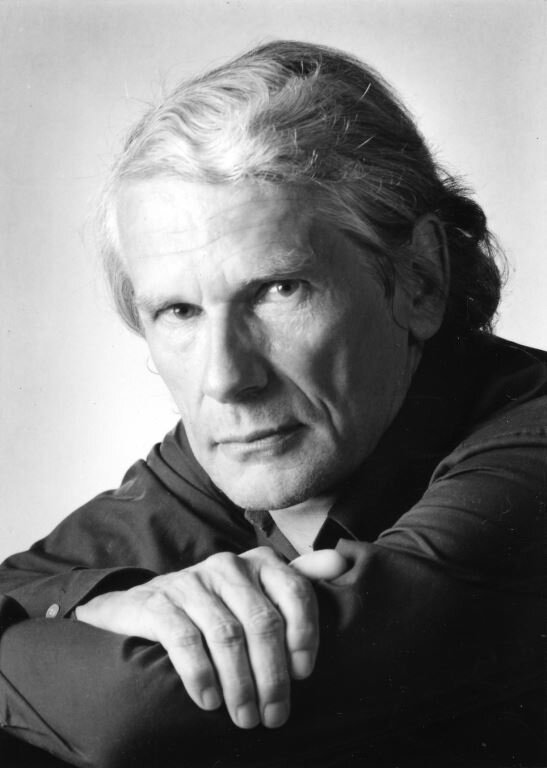

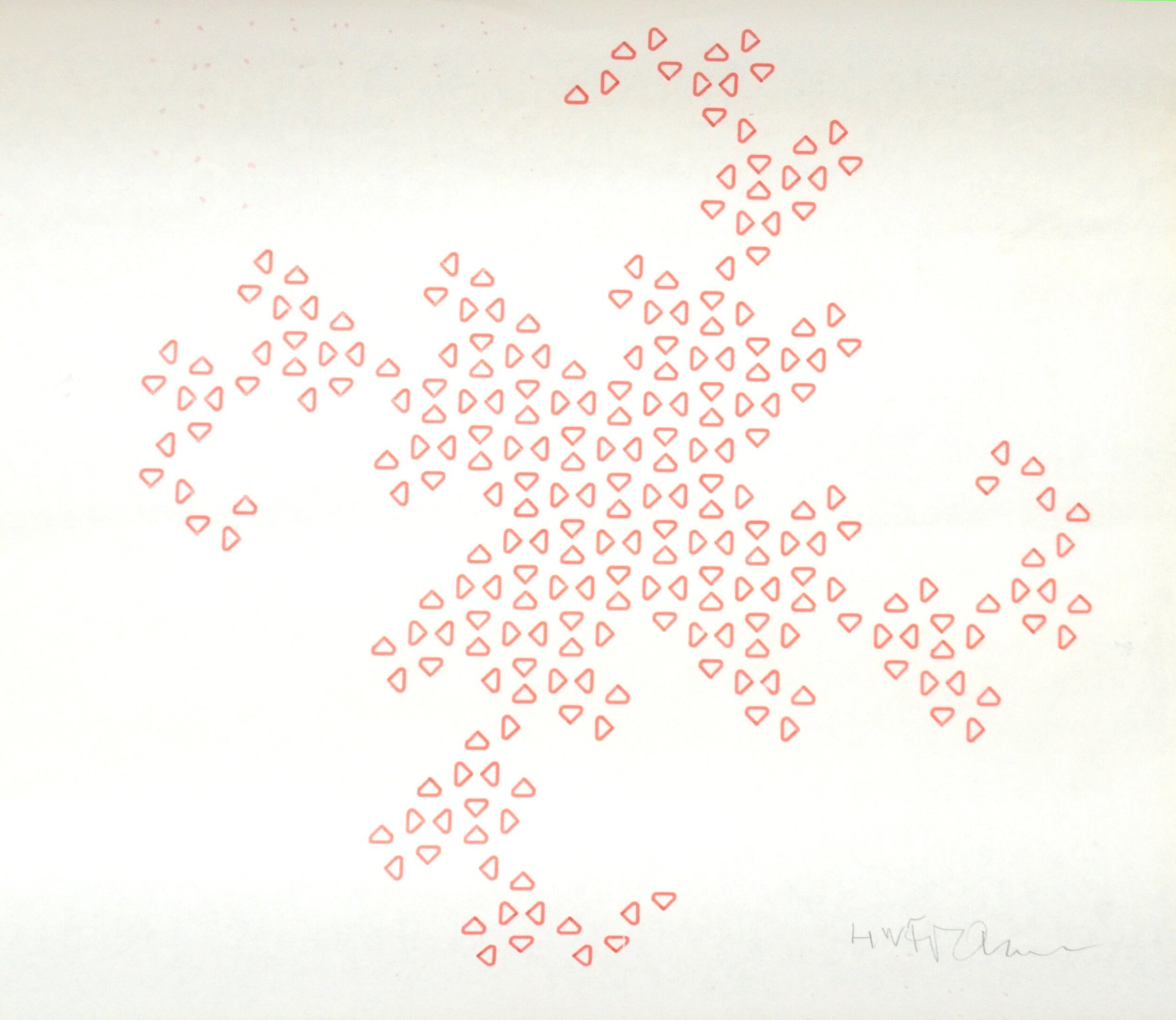

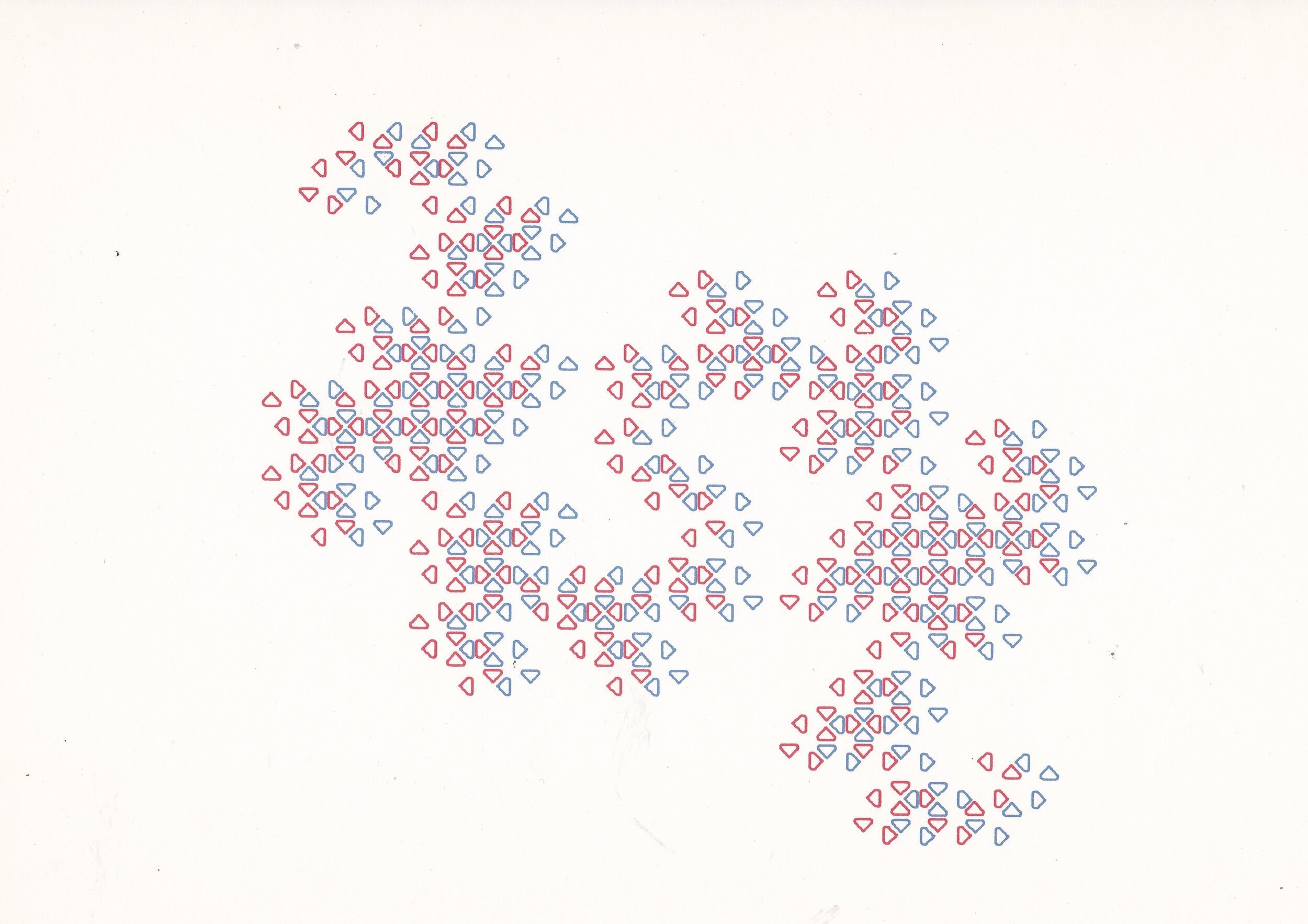
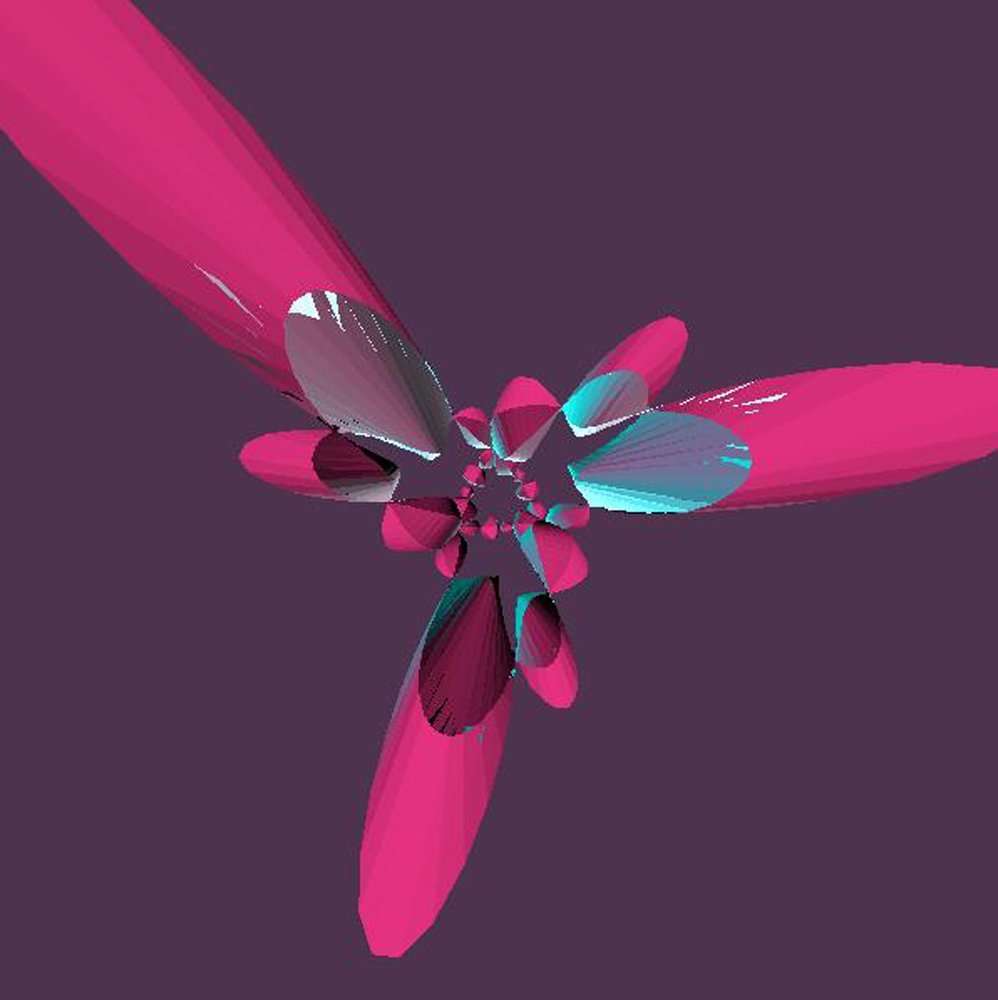

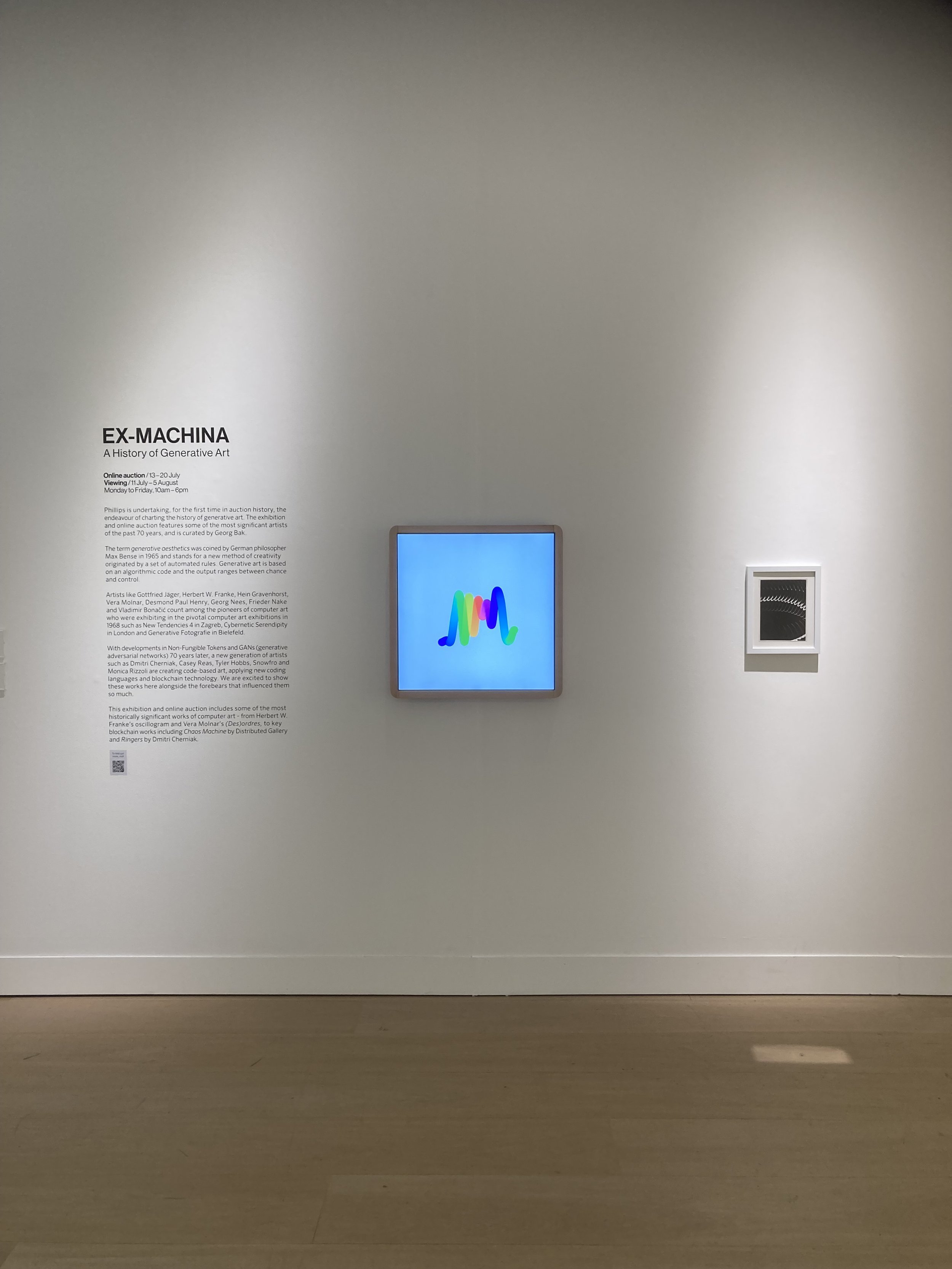







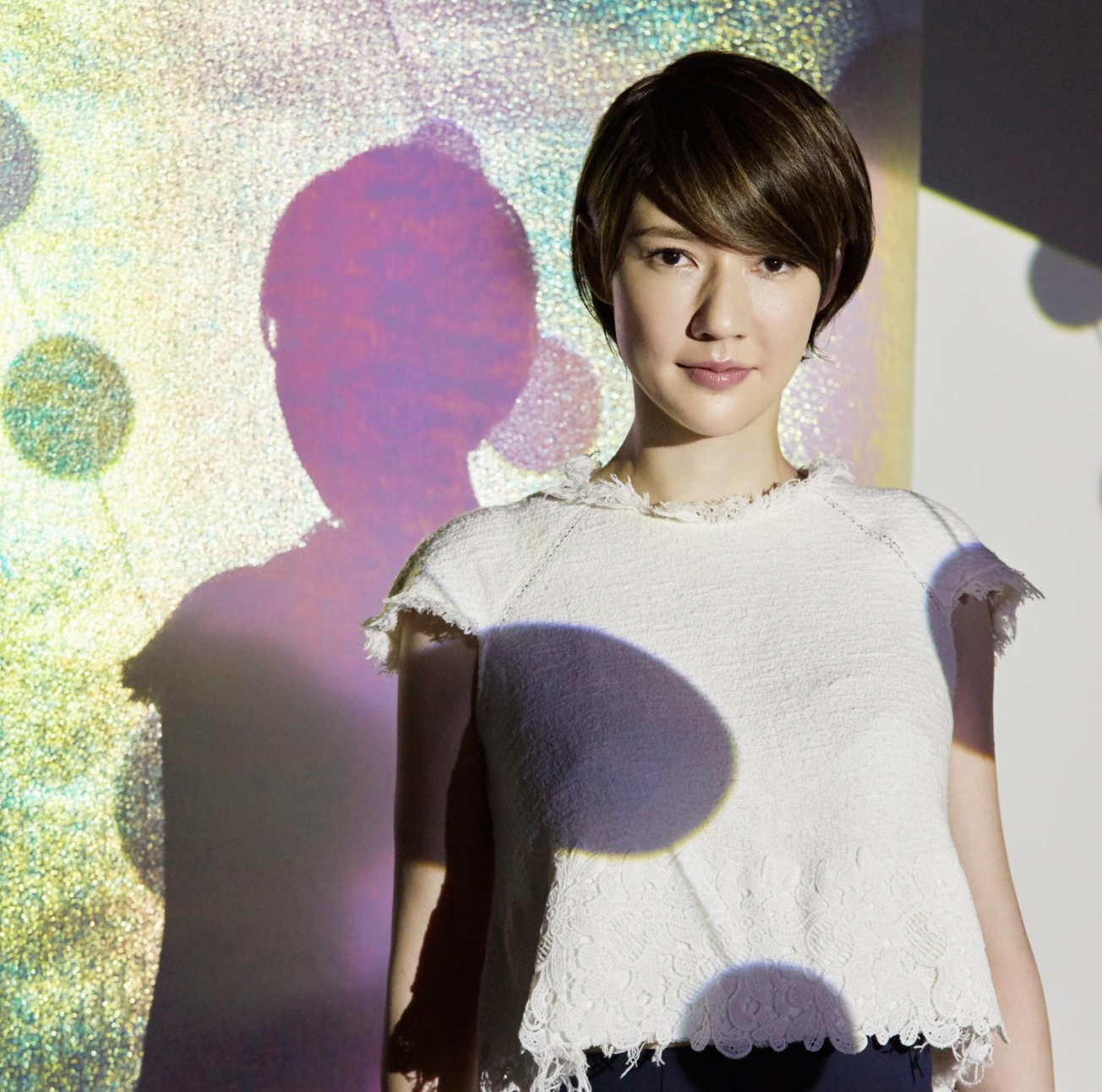


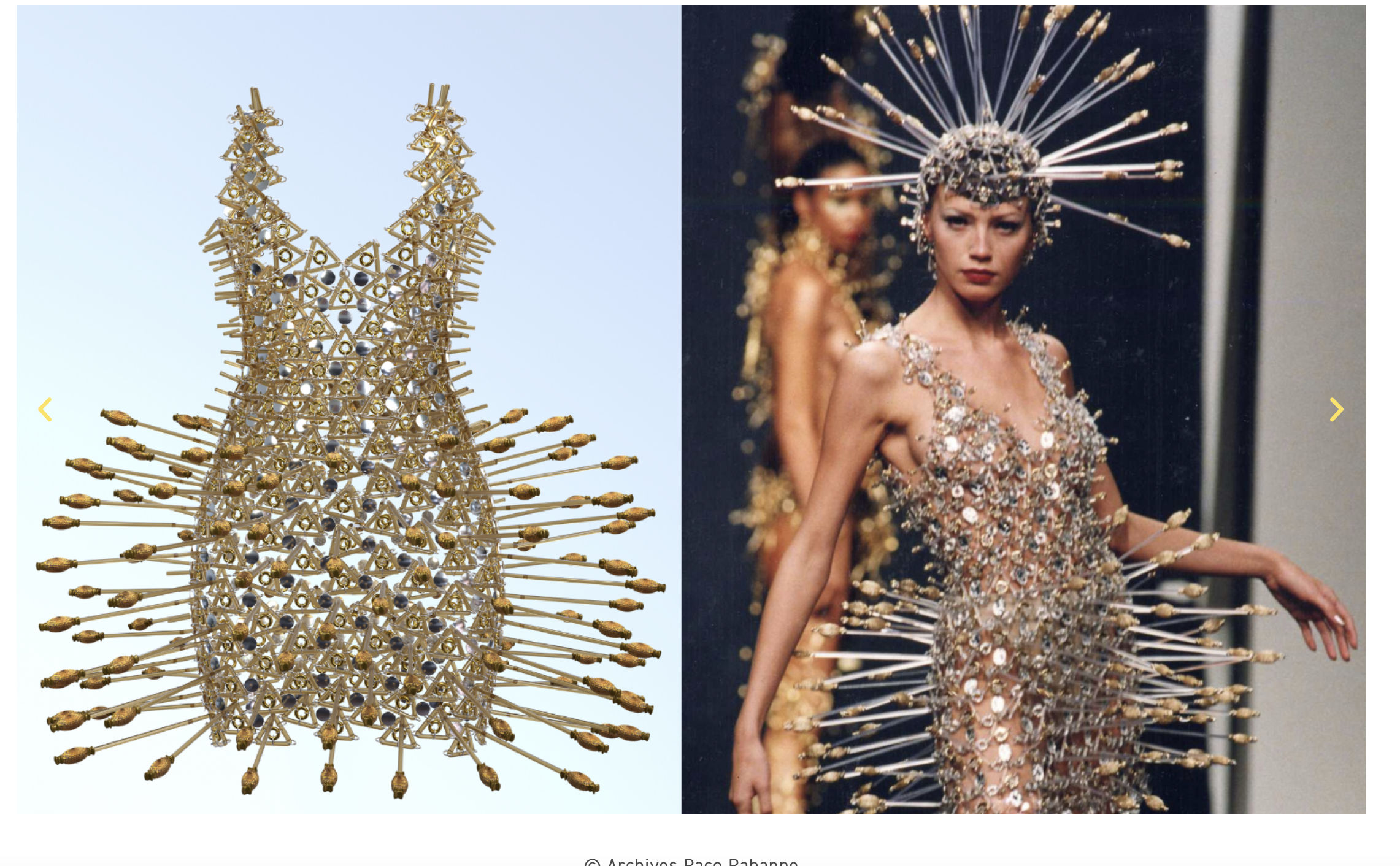

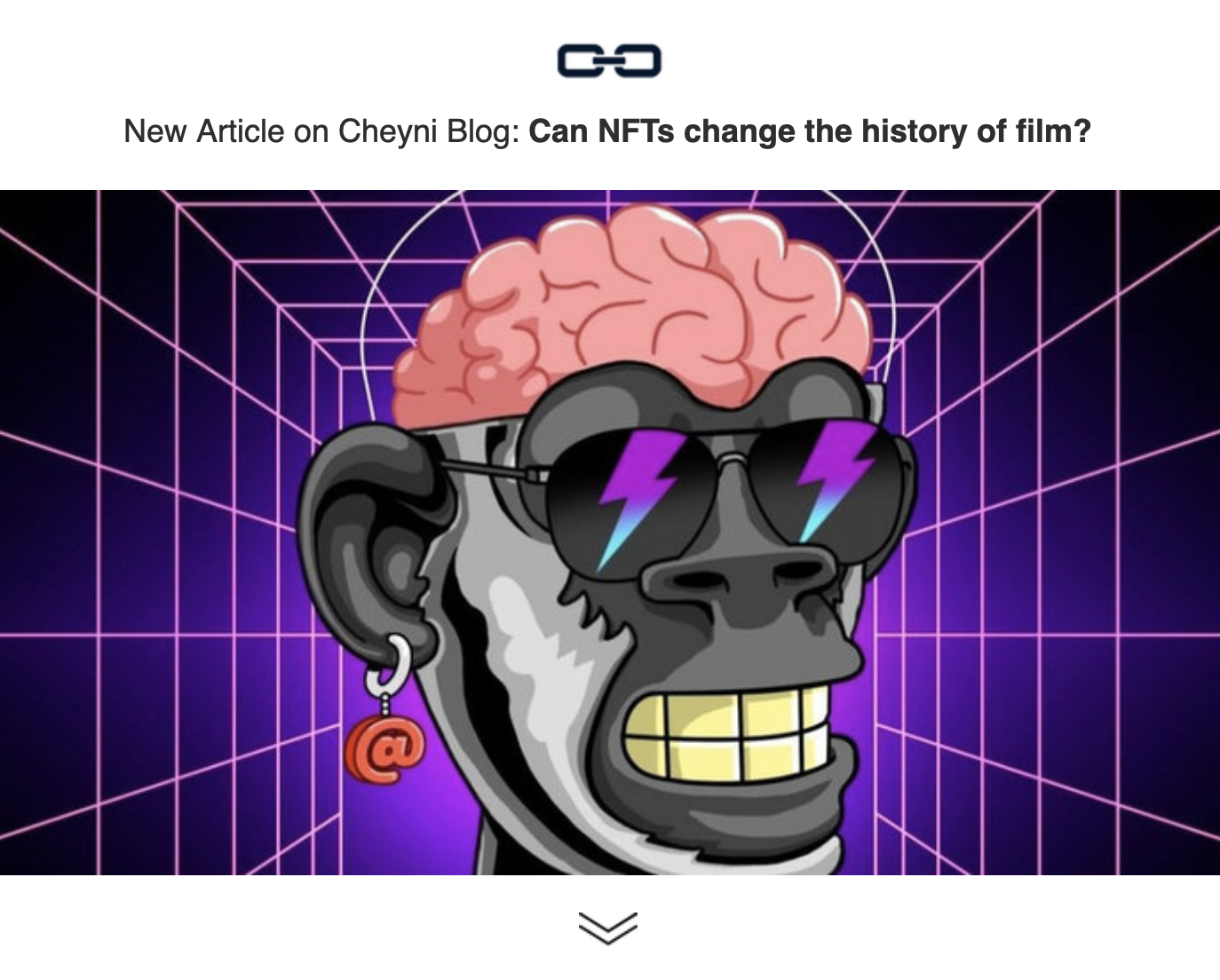

















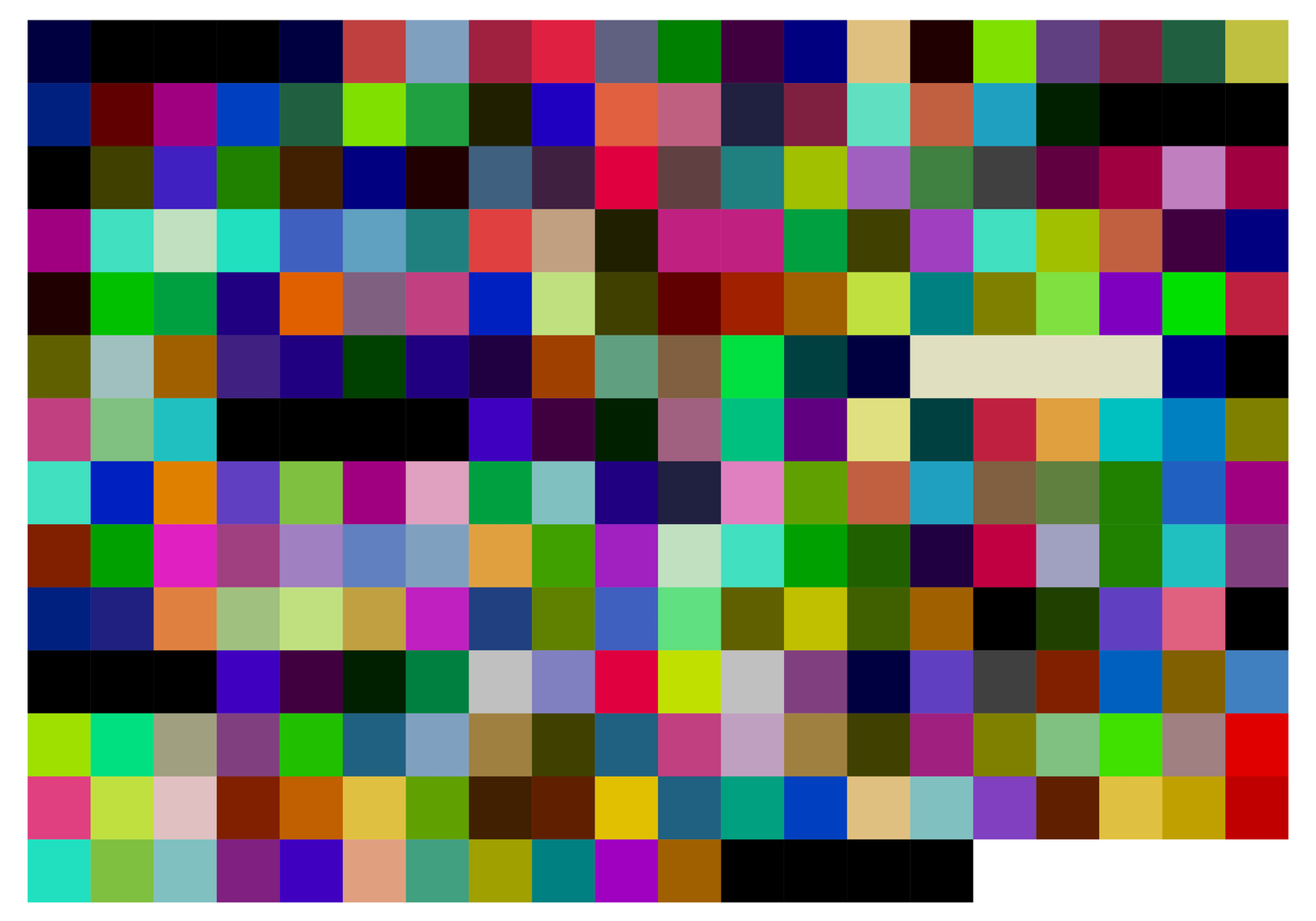











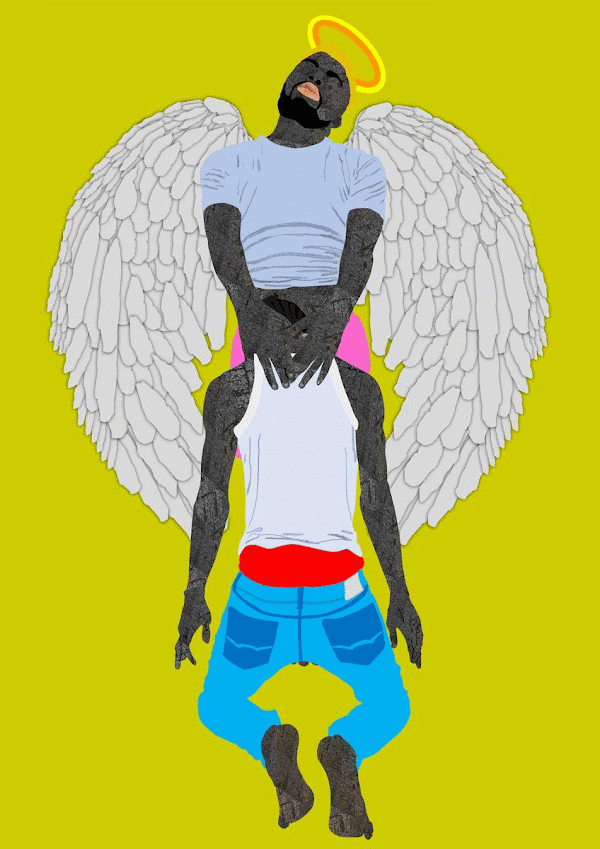













![Lissajous_Series-pink-turquoise-13[1].jpg](https://images.squarespace-cdn.com/content/v1/63a2ce0664014f2264b055d4/1671627717462-UH2LFLLEVKLYC8KE13PU/Lissajous_Series-pink-turquoise-13%5B1%5D.jpg)

![Lissajous_Series-pink-turquoise-13[1].jpg](https://images.squarespace-cdn.com/content/v1/63a2ce0664014f2264b055d4/1671627721465-PZT0WI6X60YTVEIFKKC5/Lissajous_Series-pink-turquoise-13%5B1%5D.jpg)




















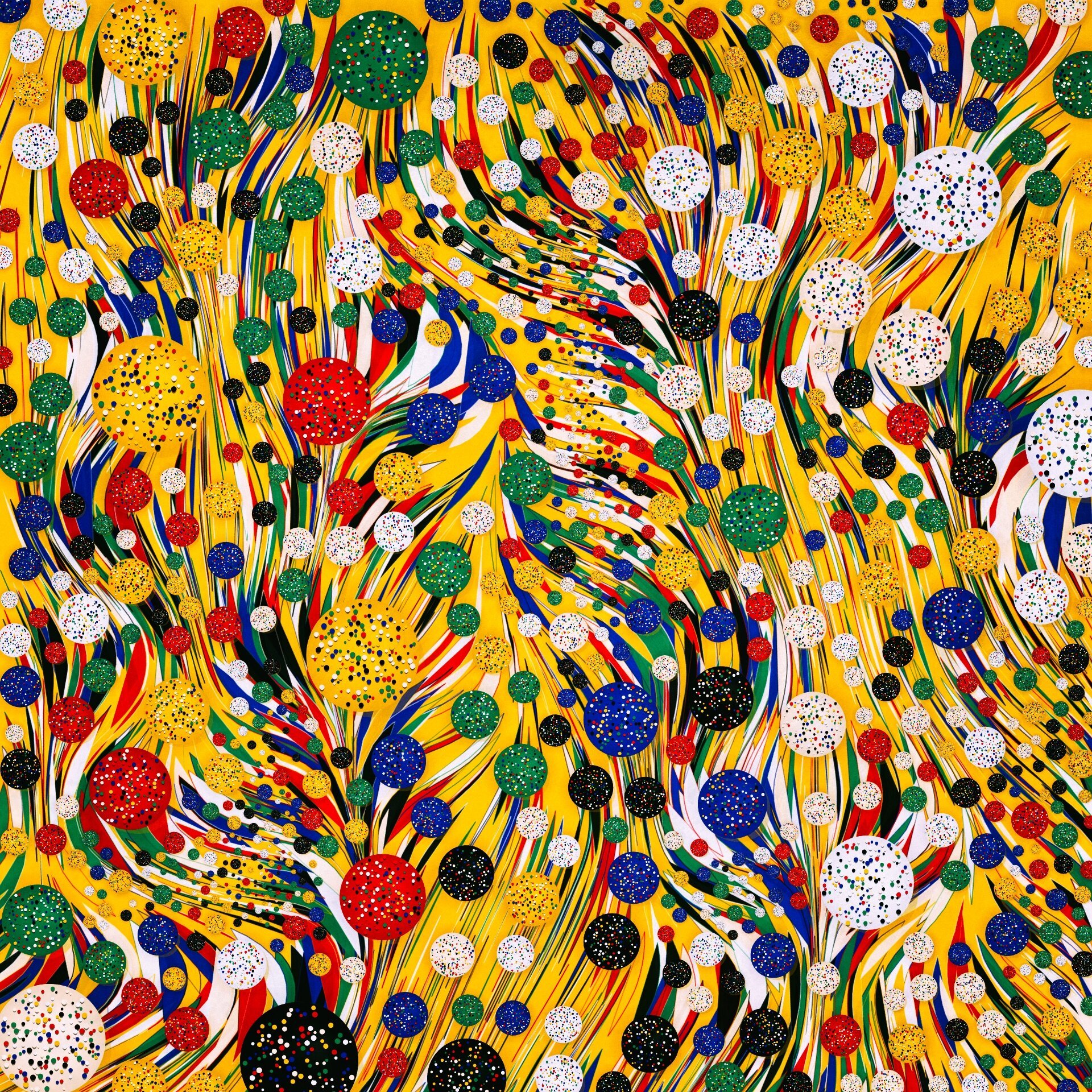








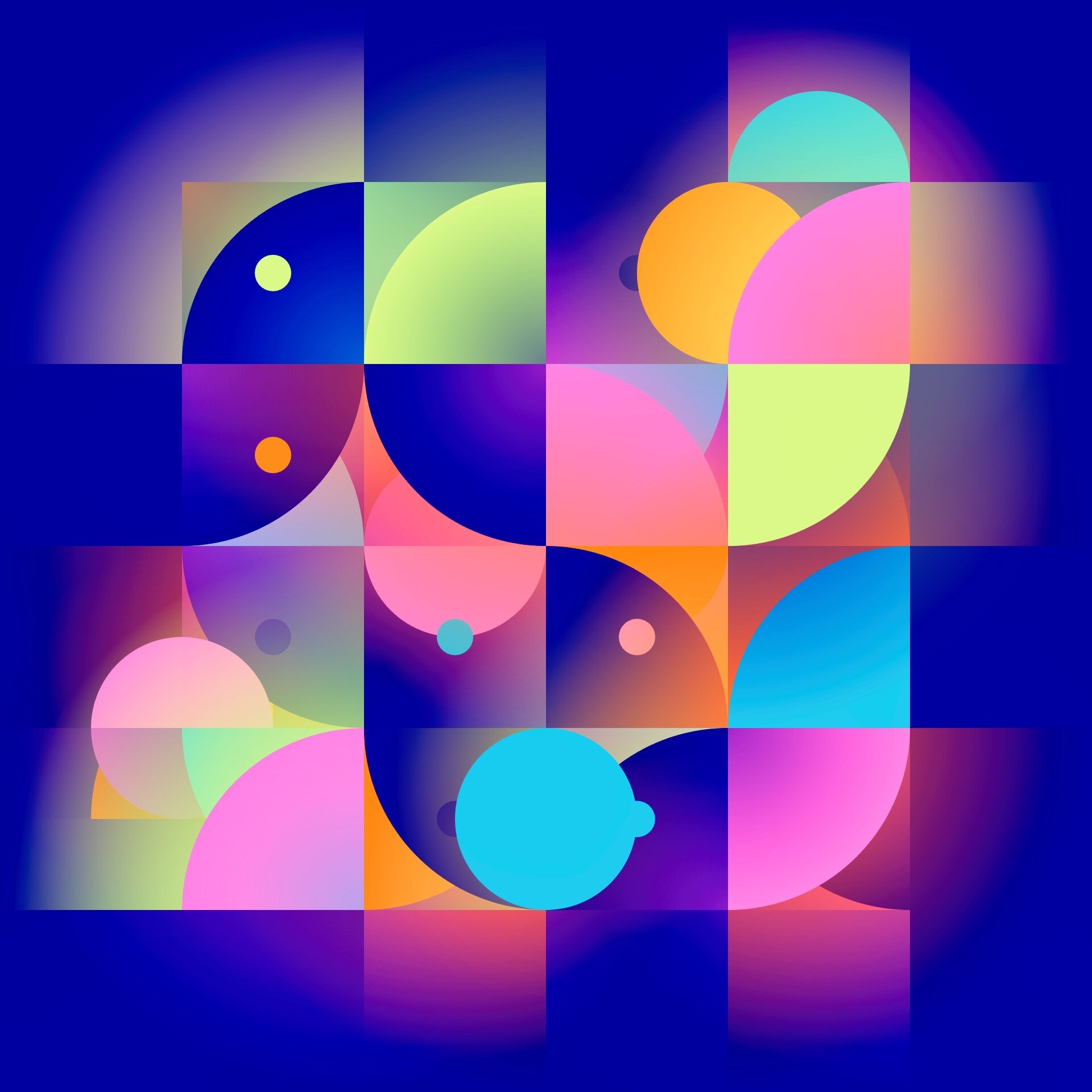



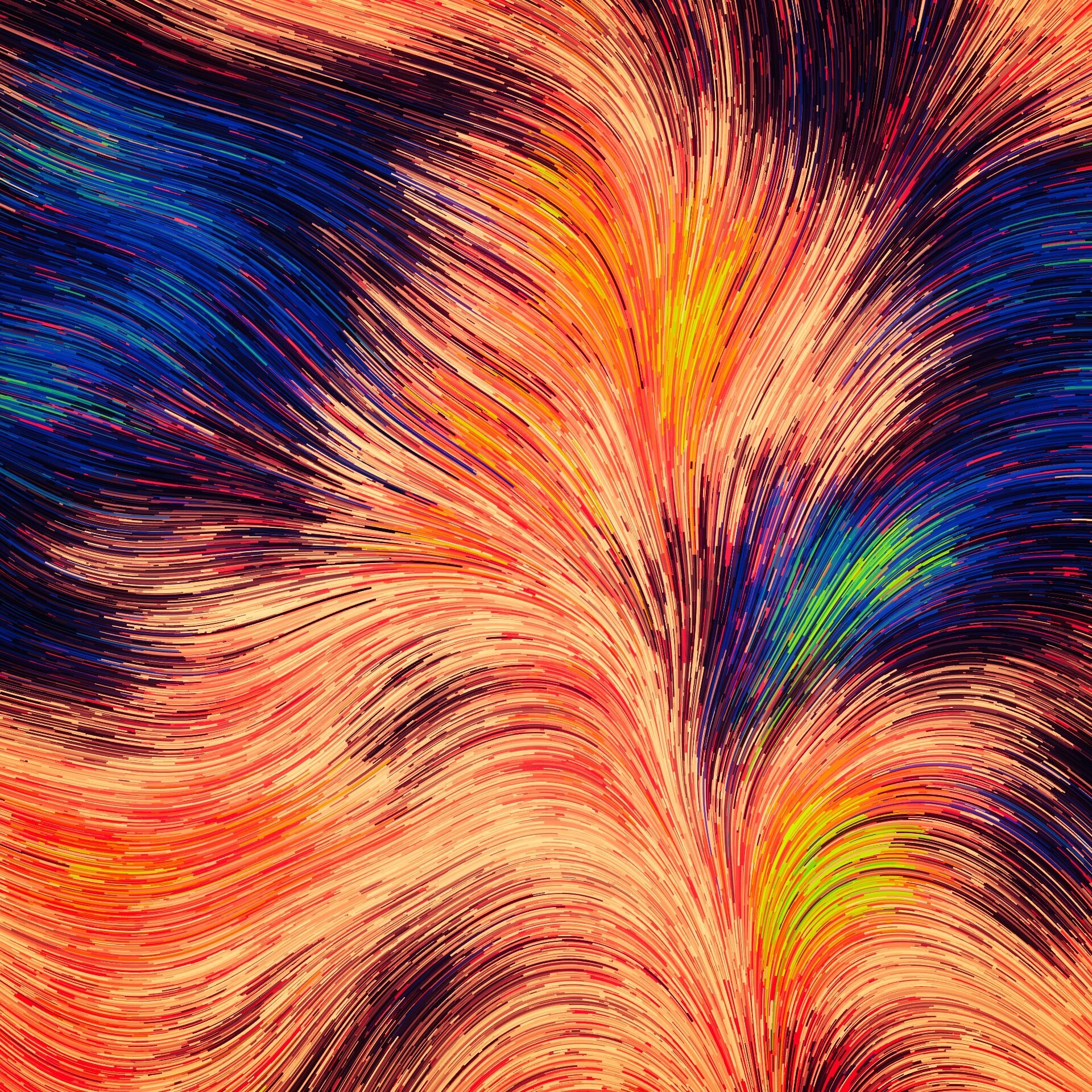























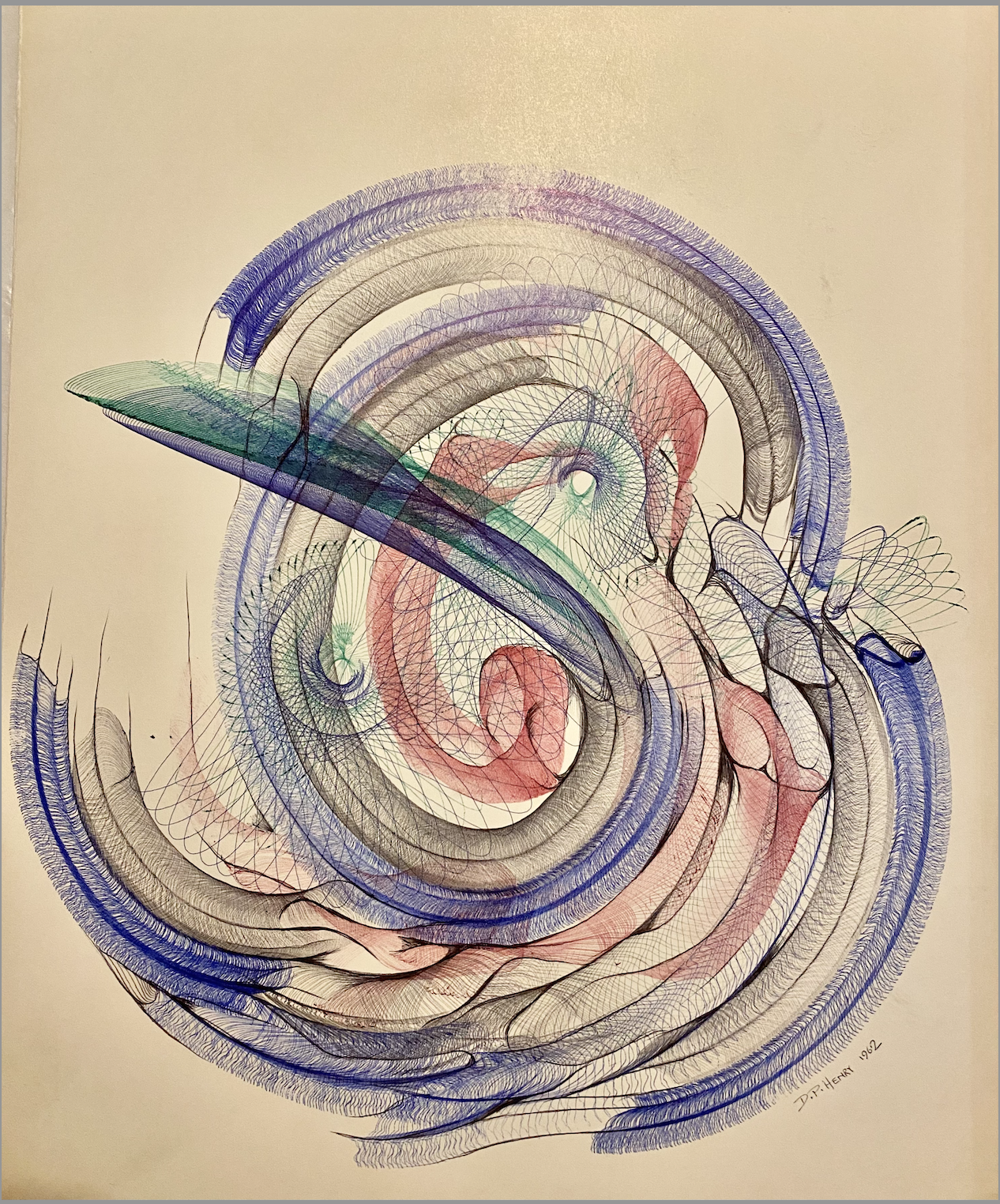
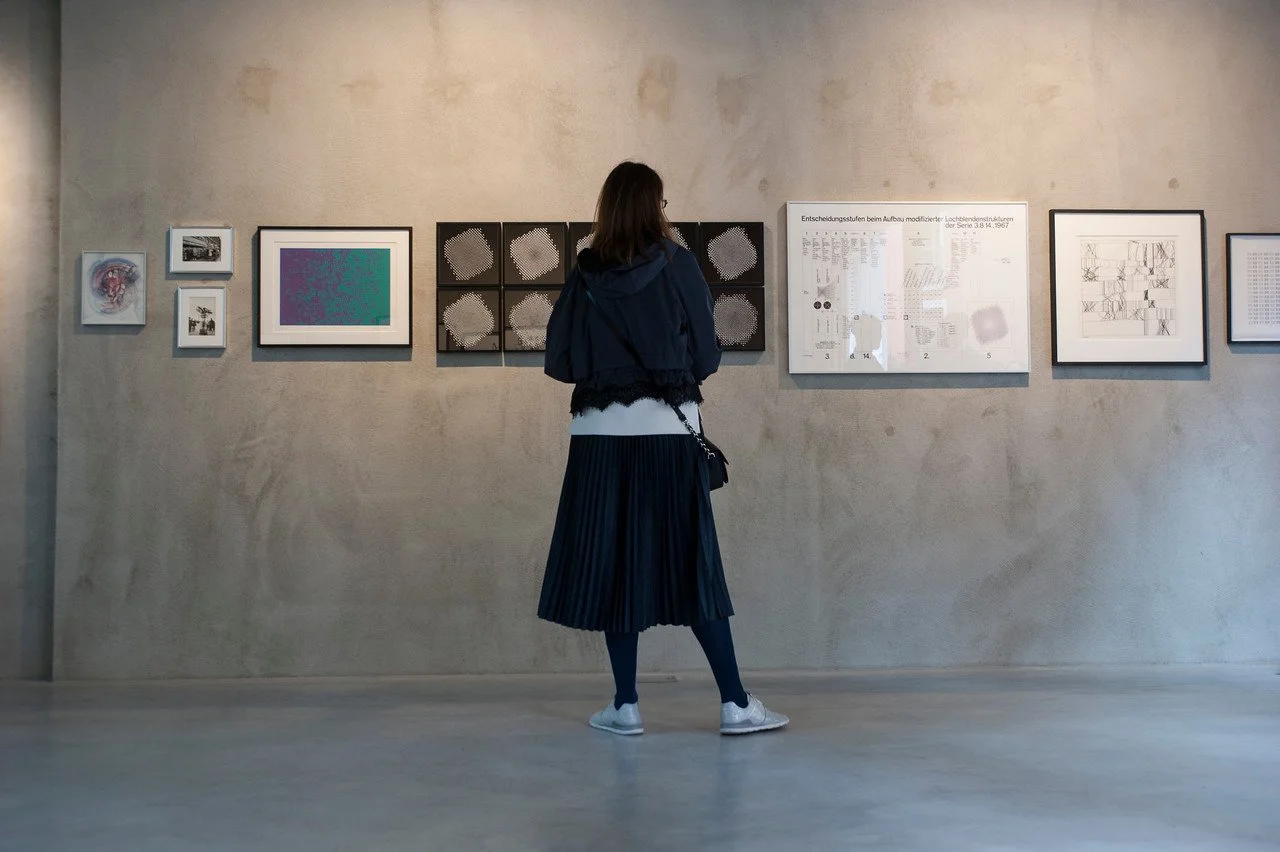
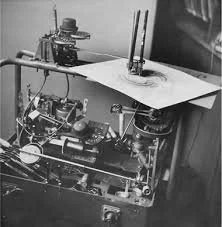






























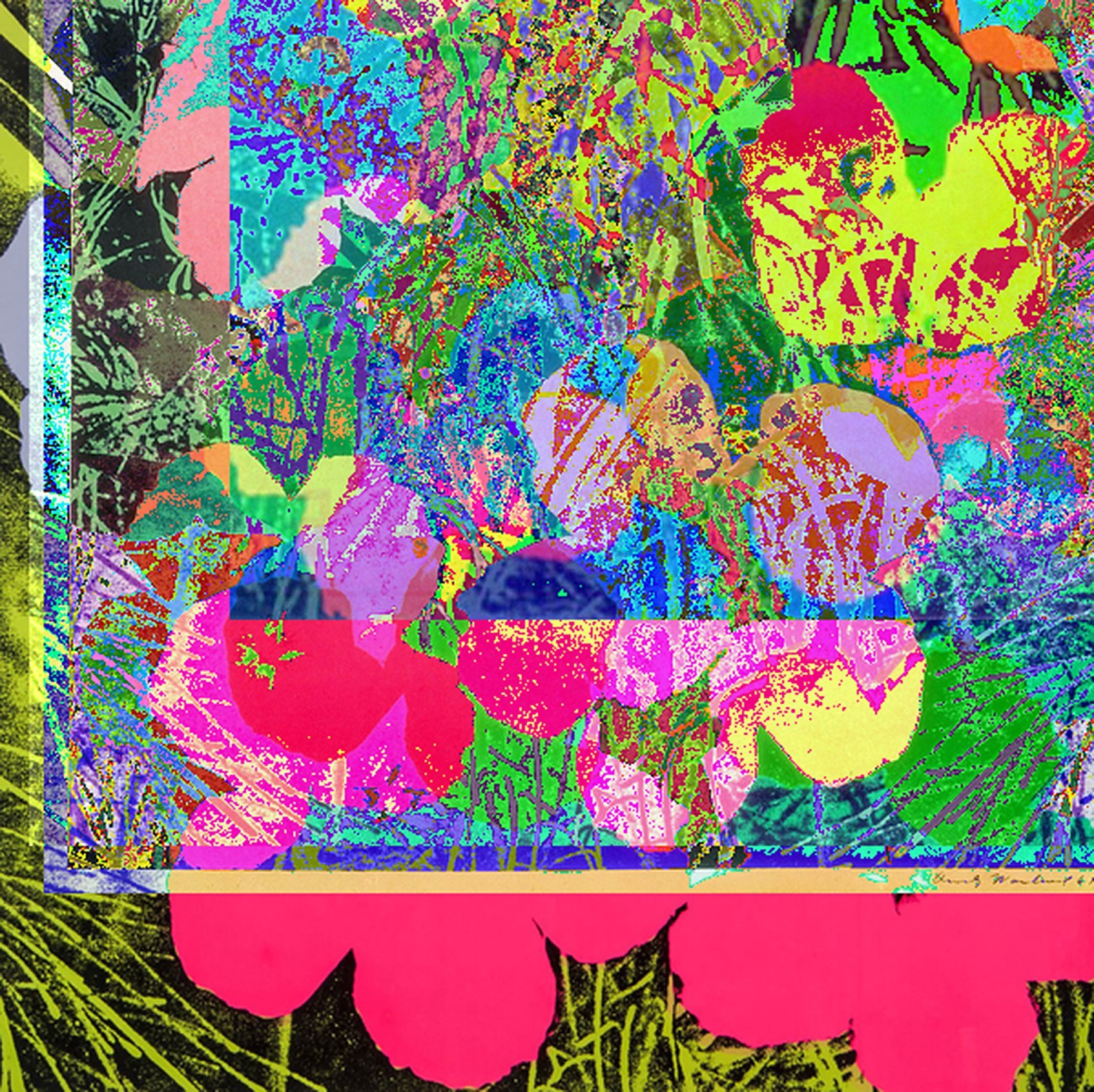
















Personal Effects (2018) canvas sac, artist's blood,ink
PRICE UPON REQUEST
Please email us at: info@katevassgalerie.com